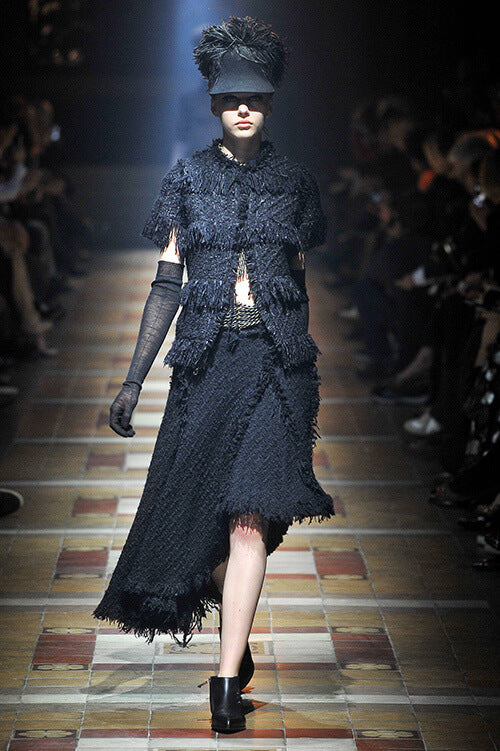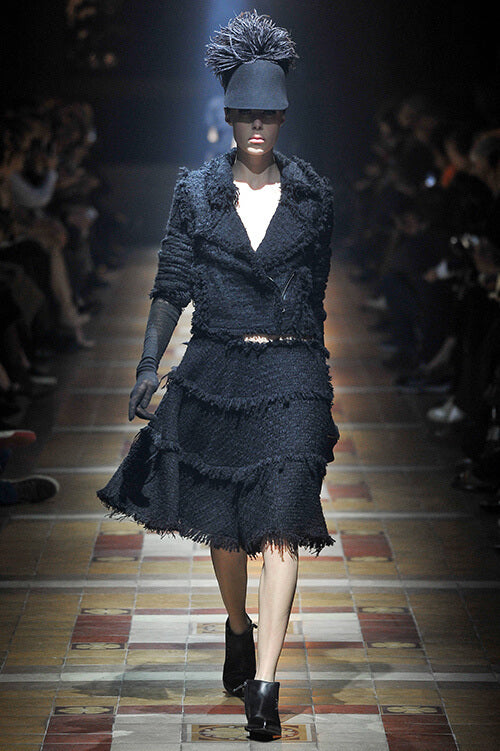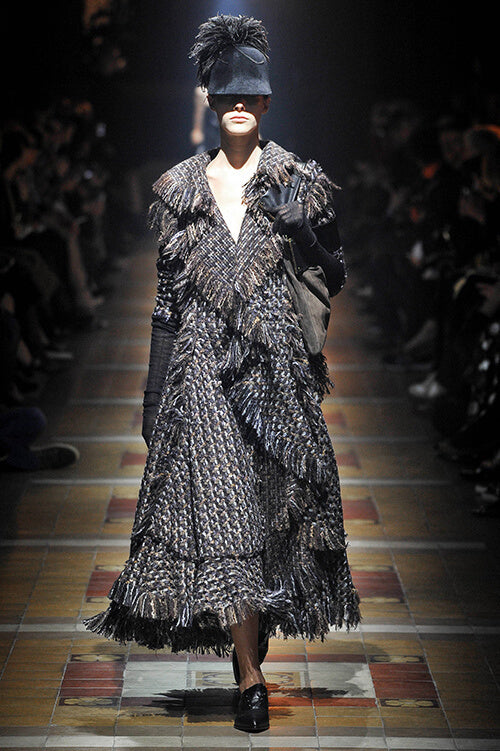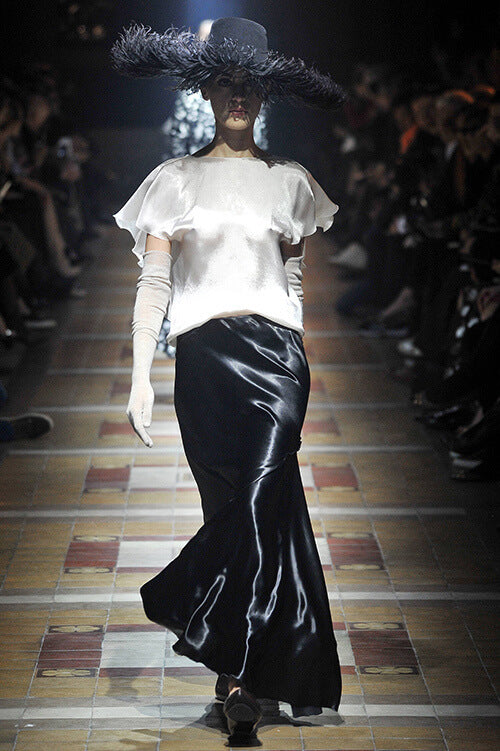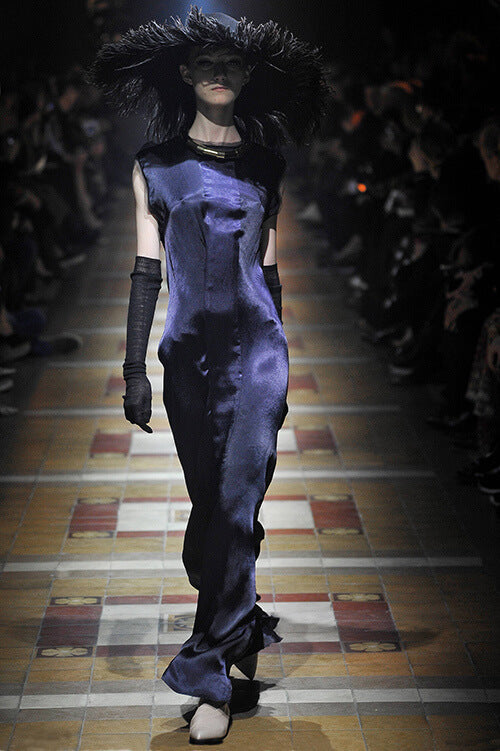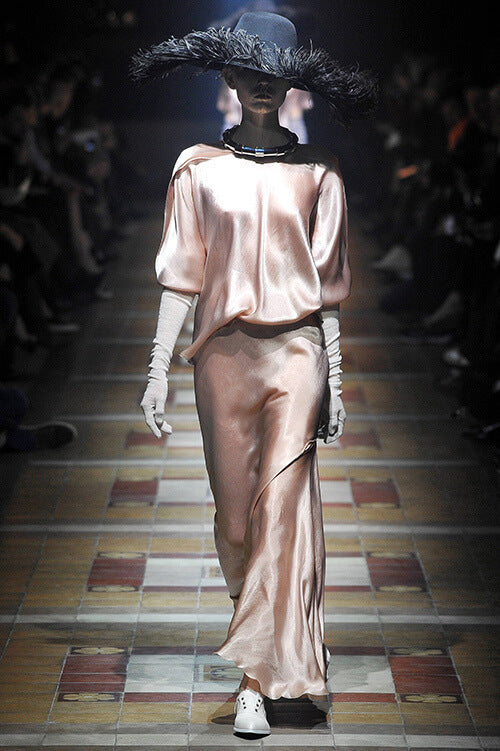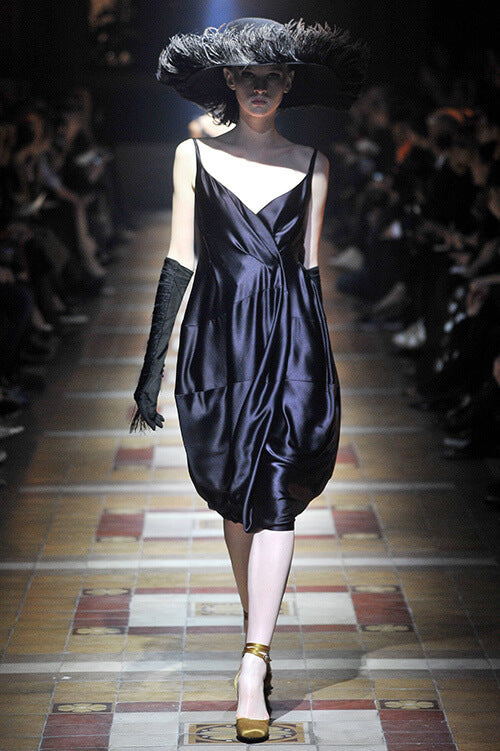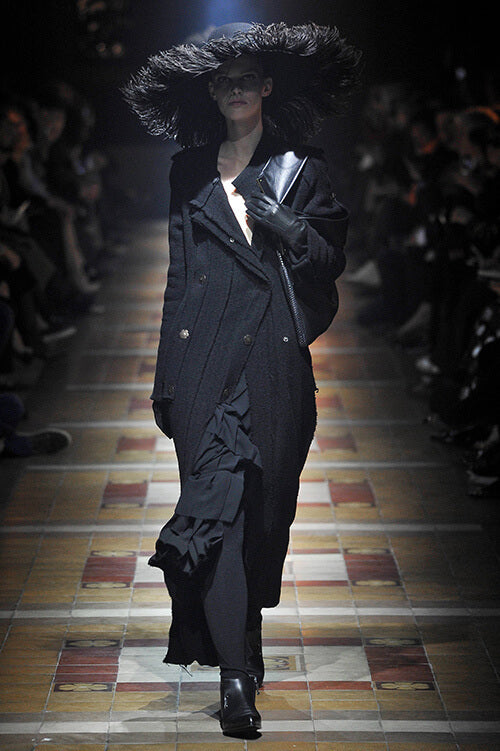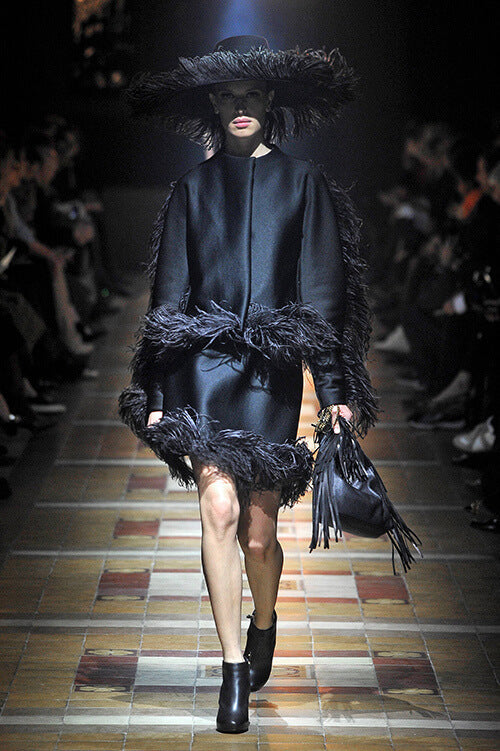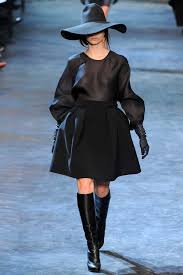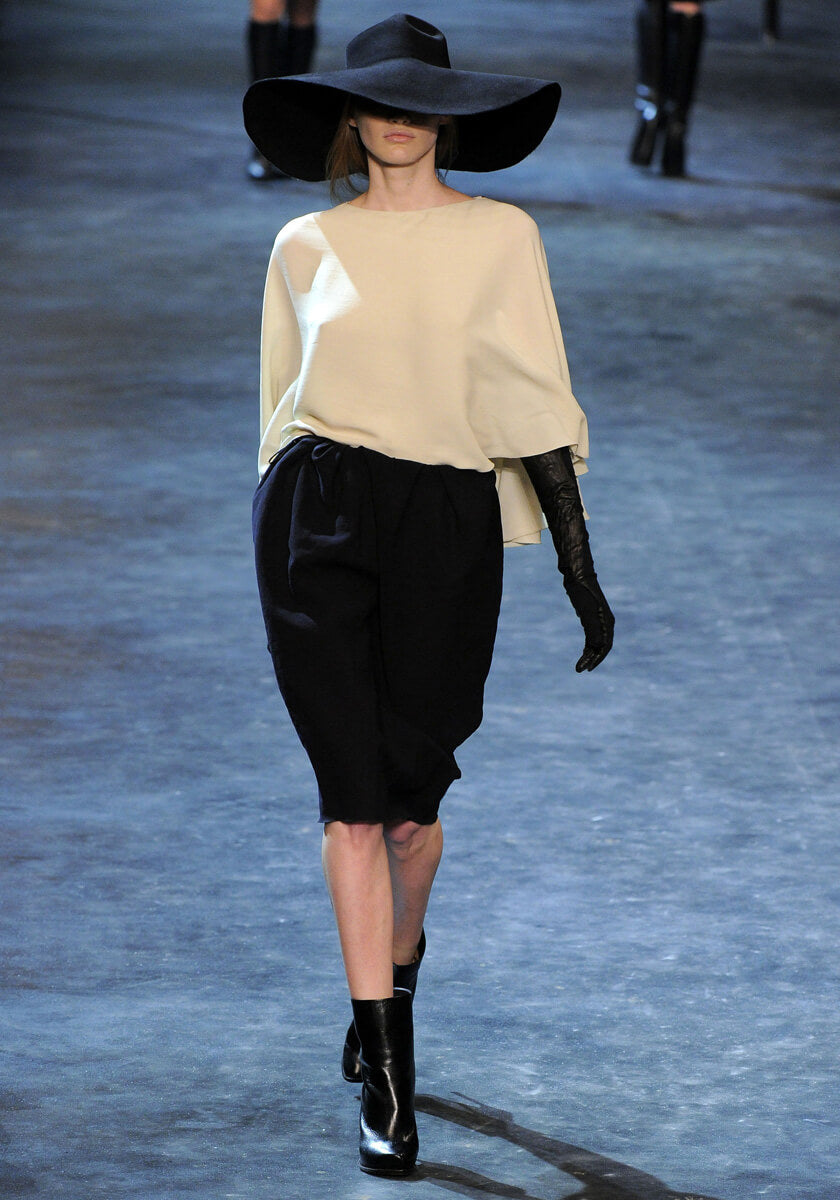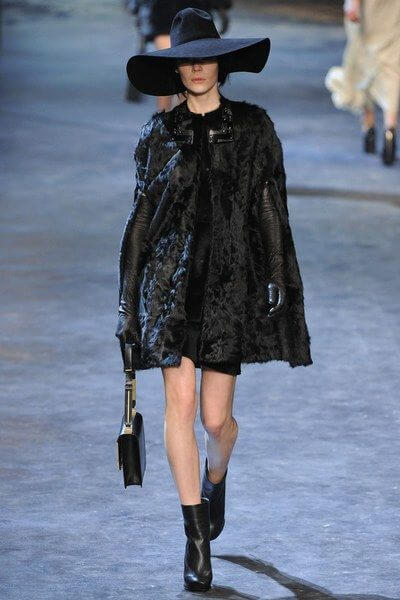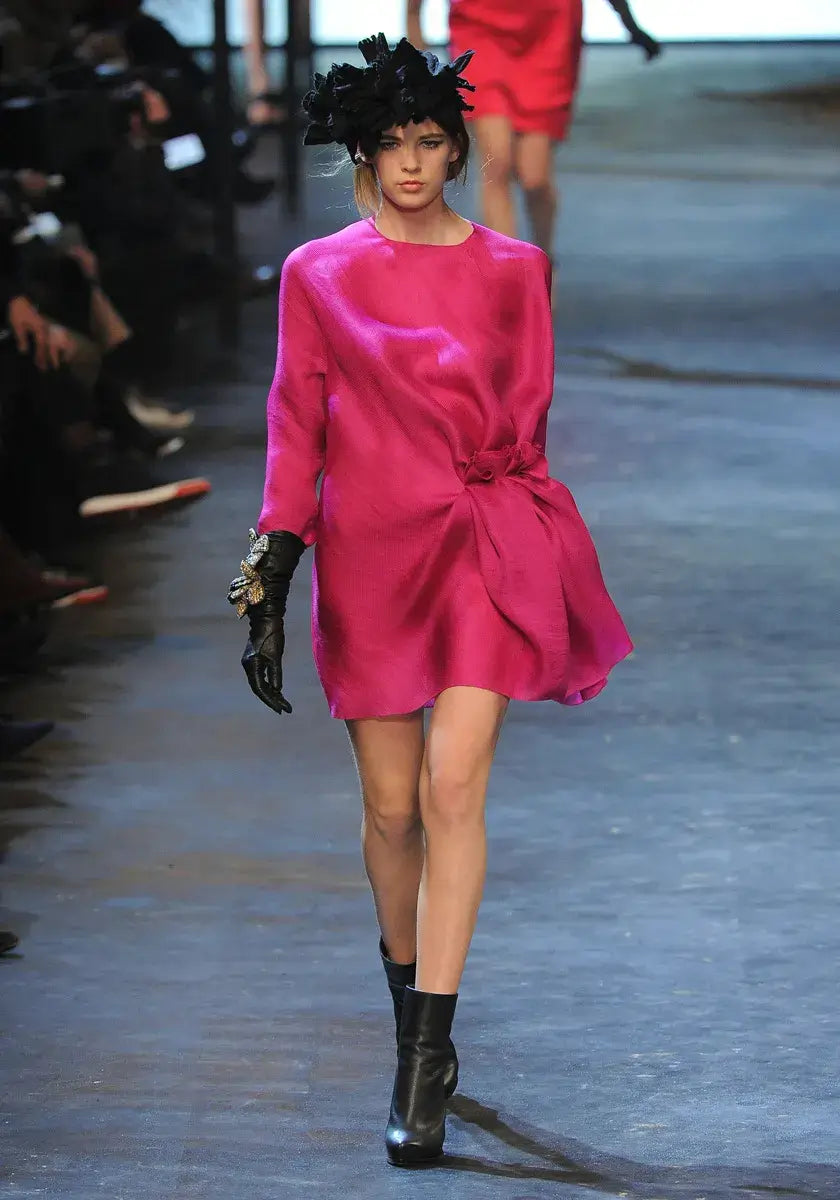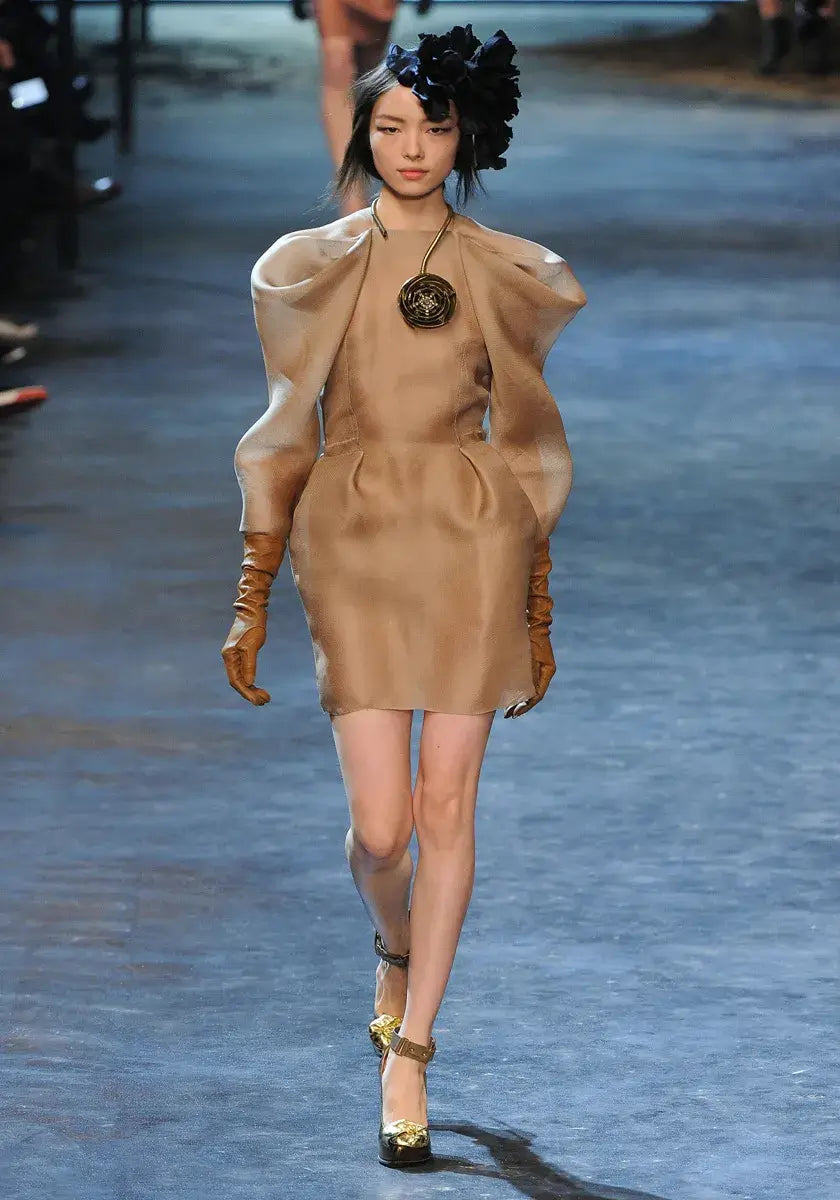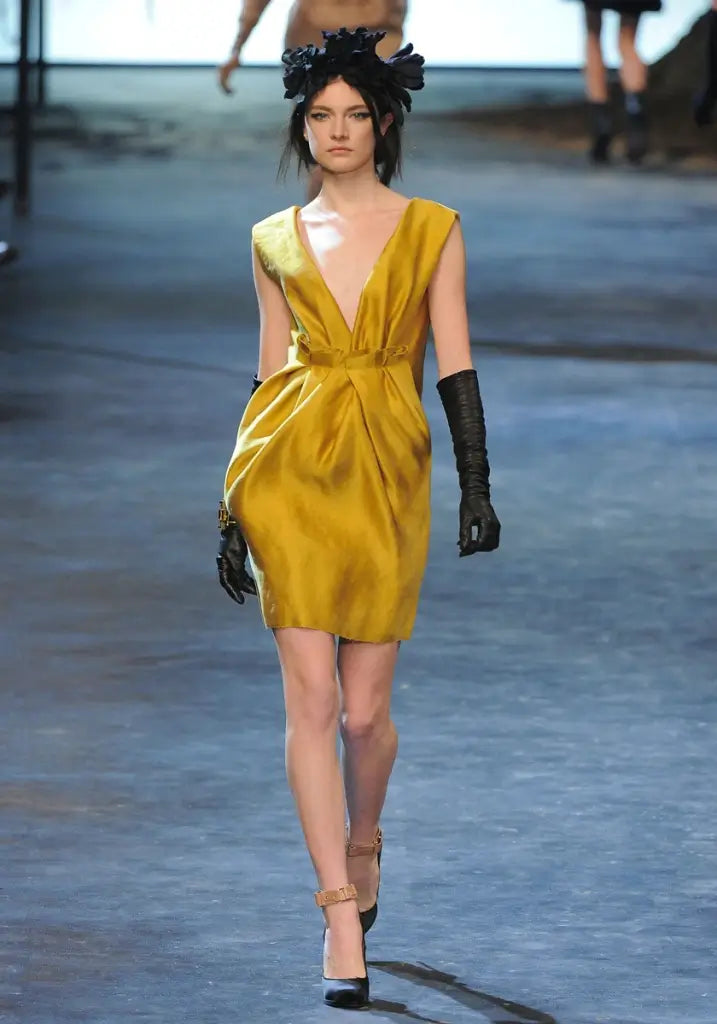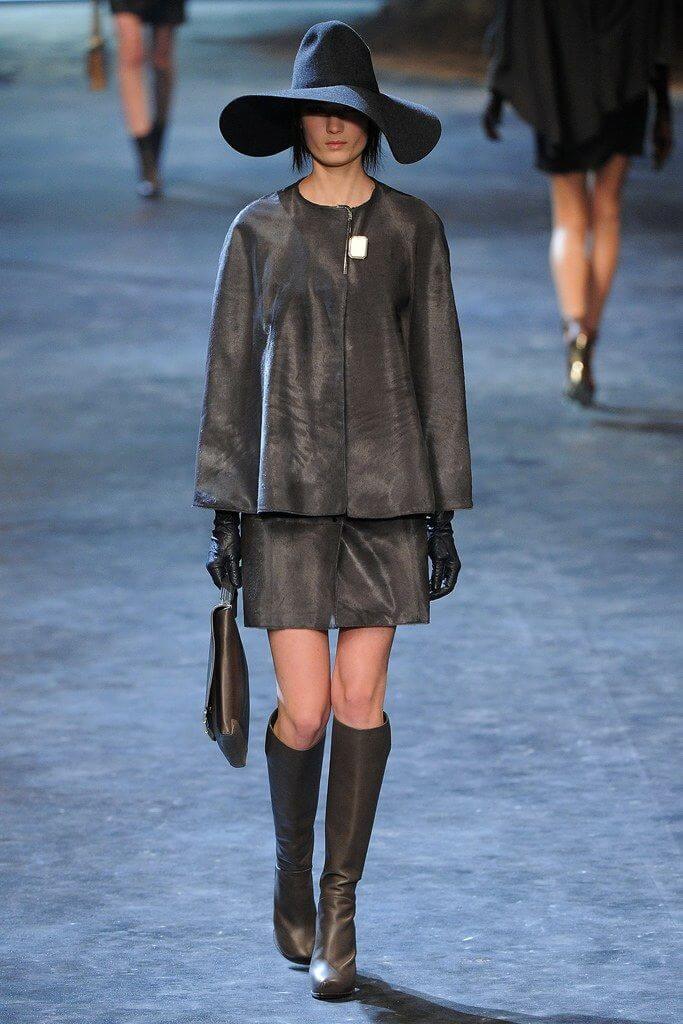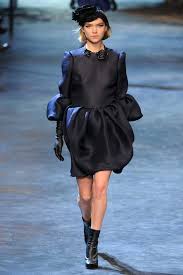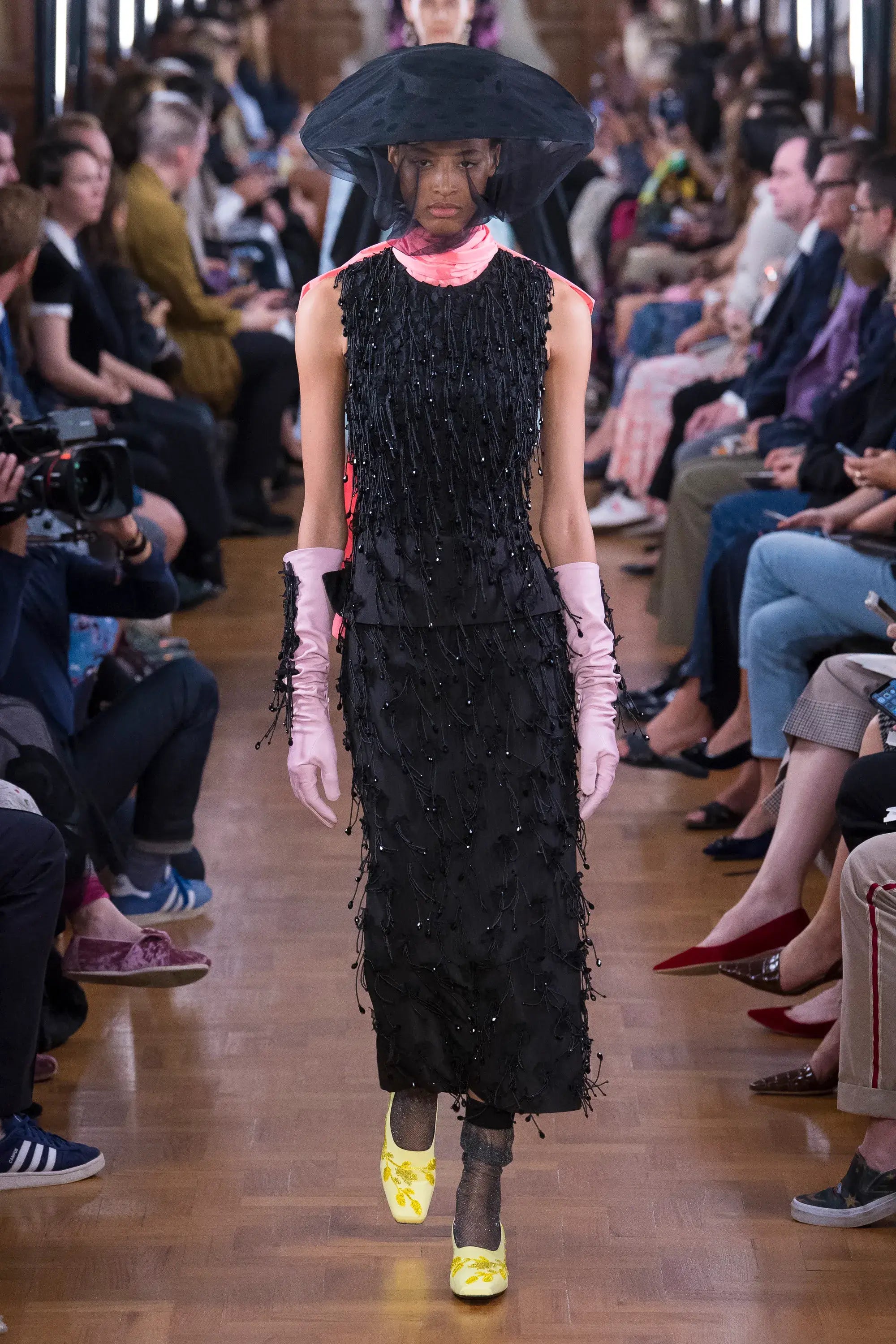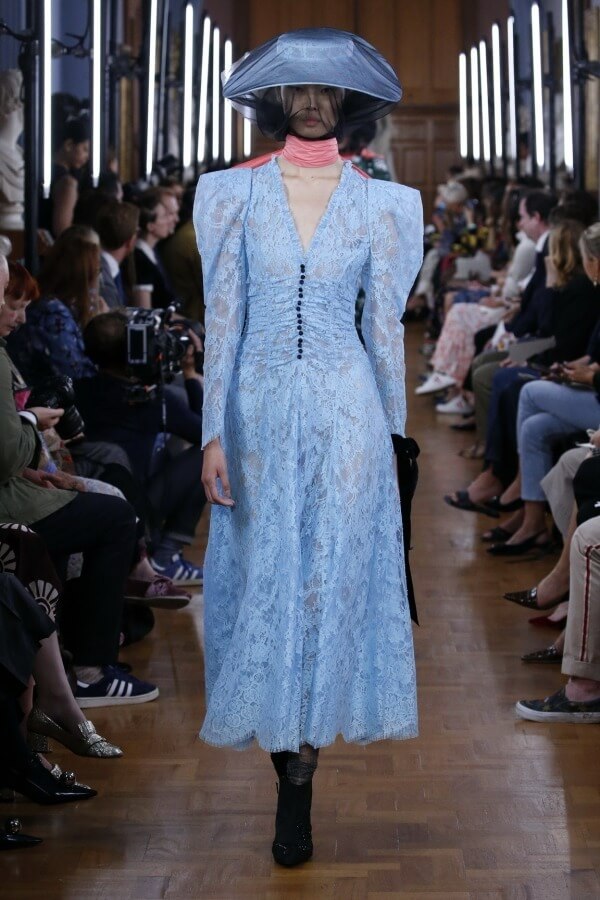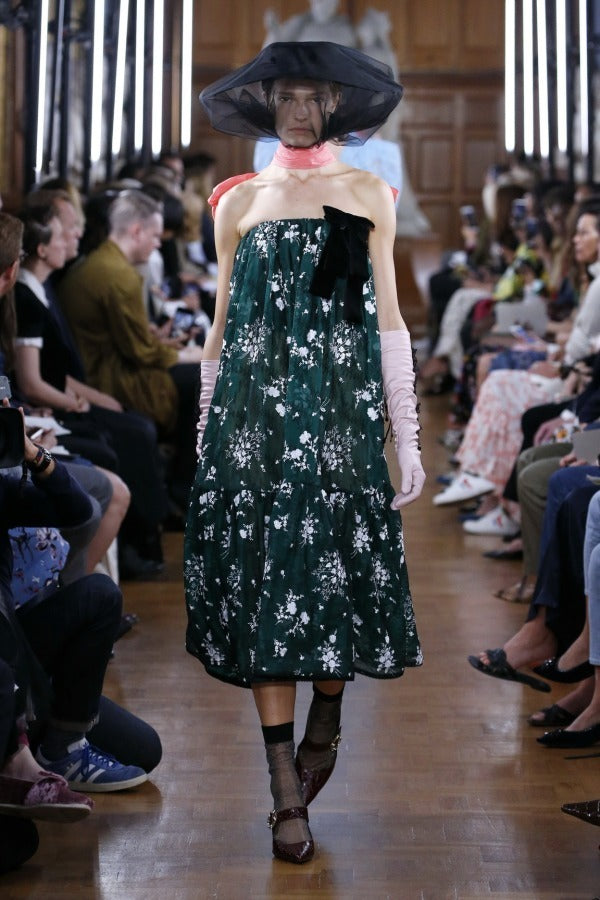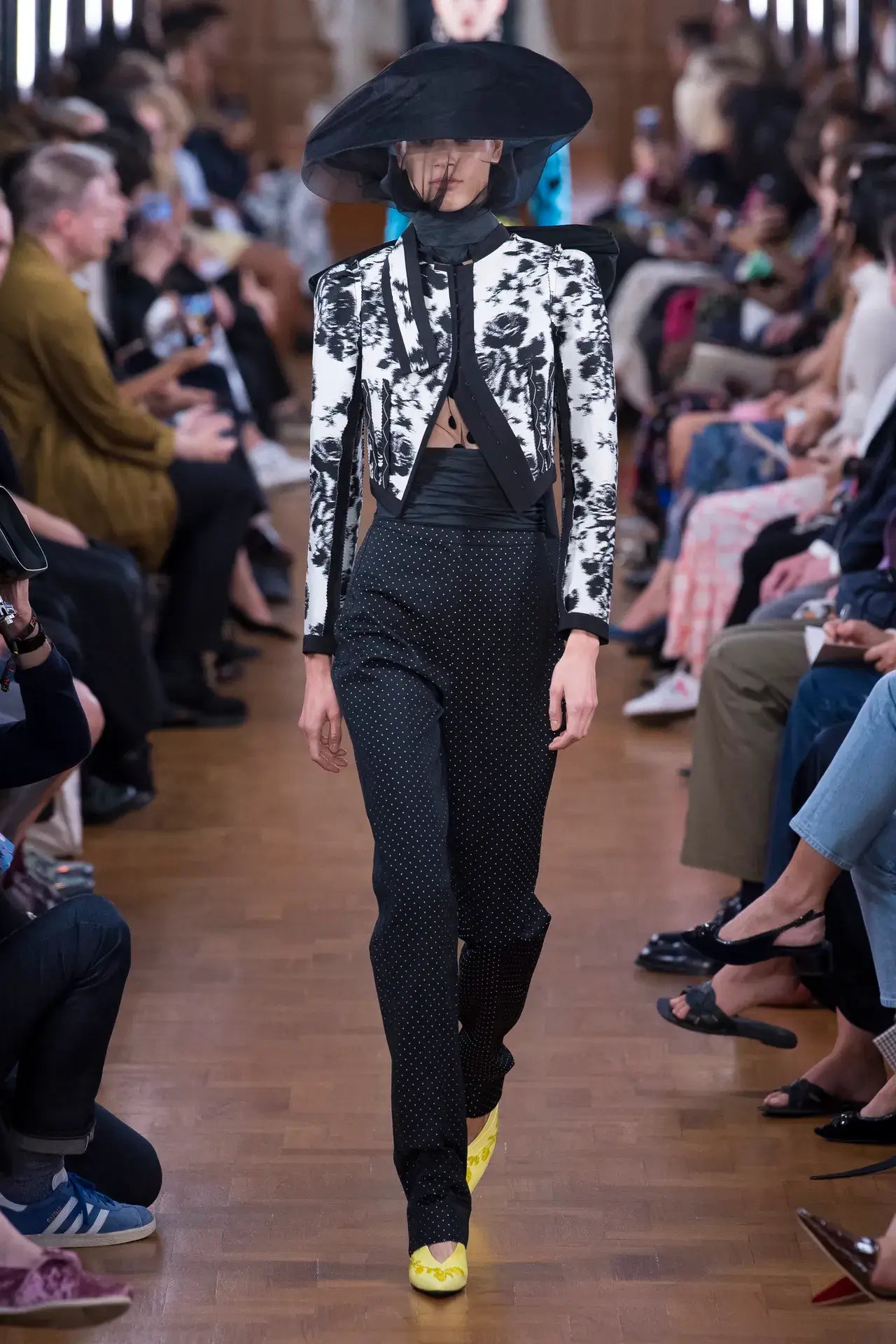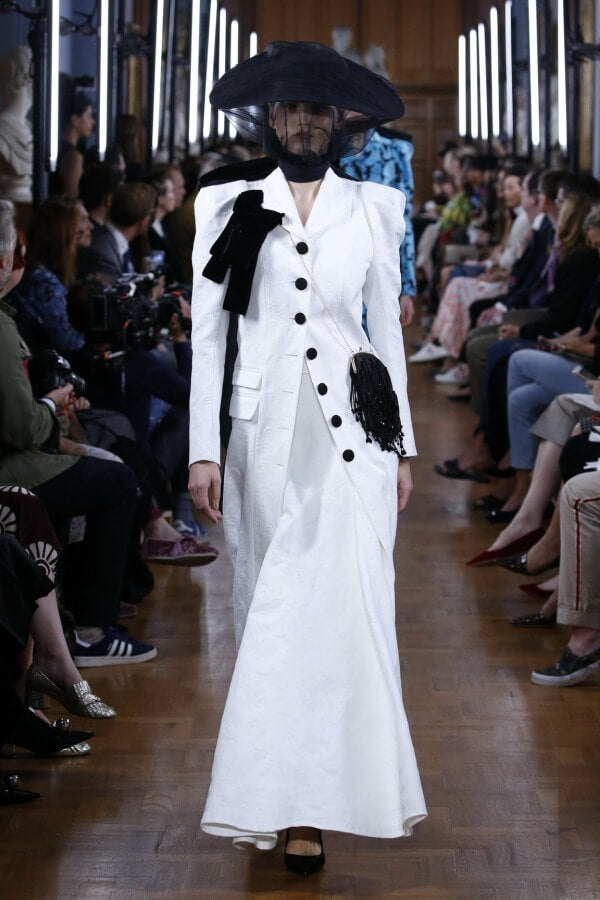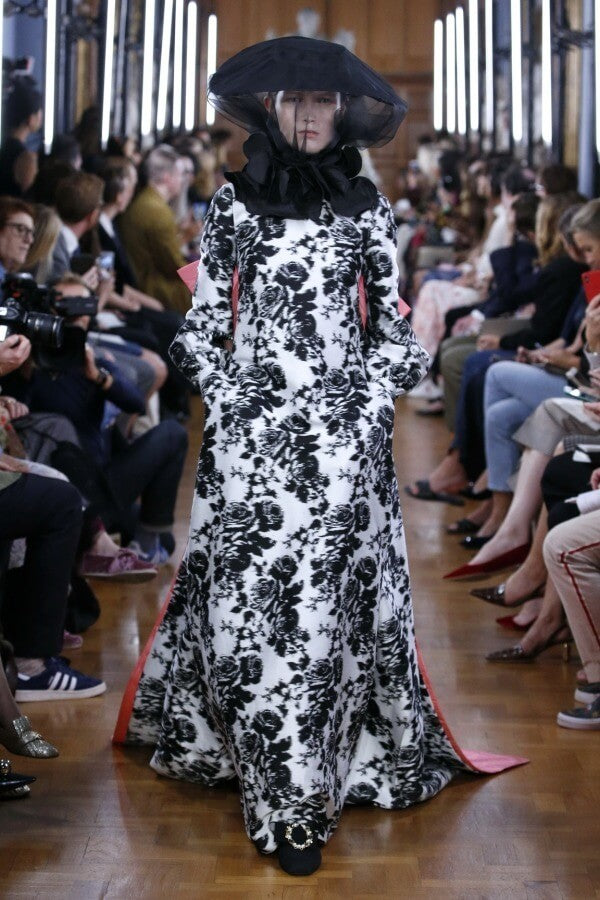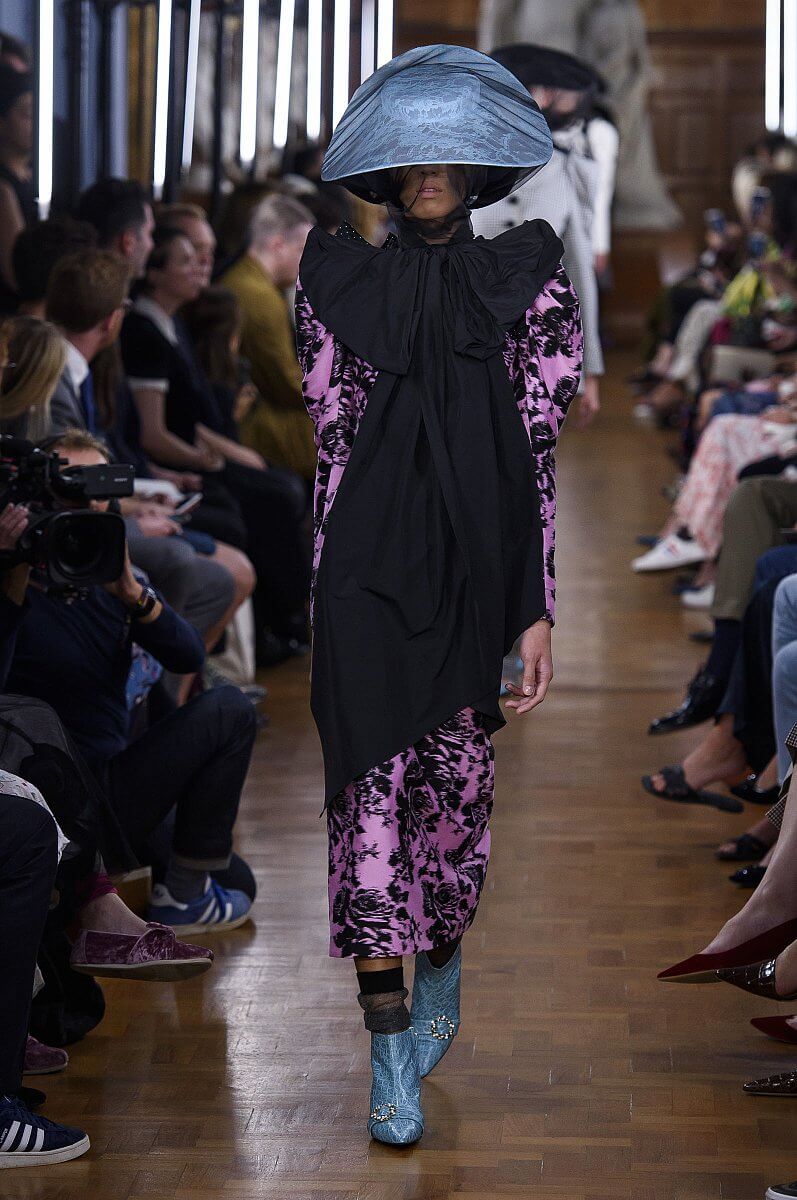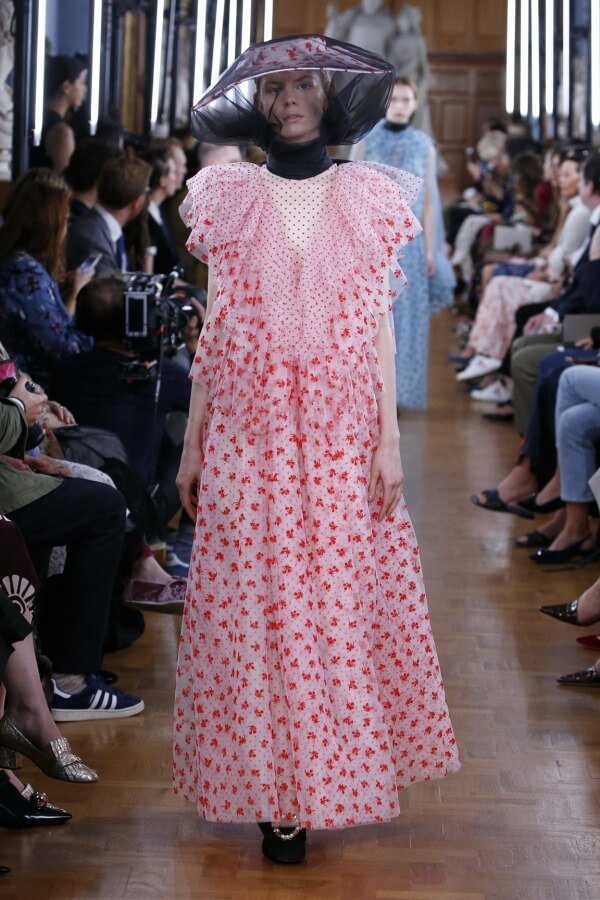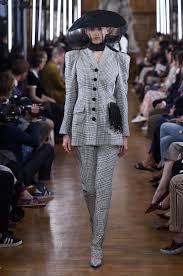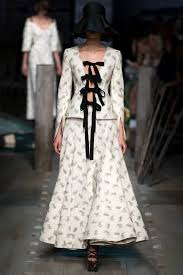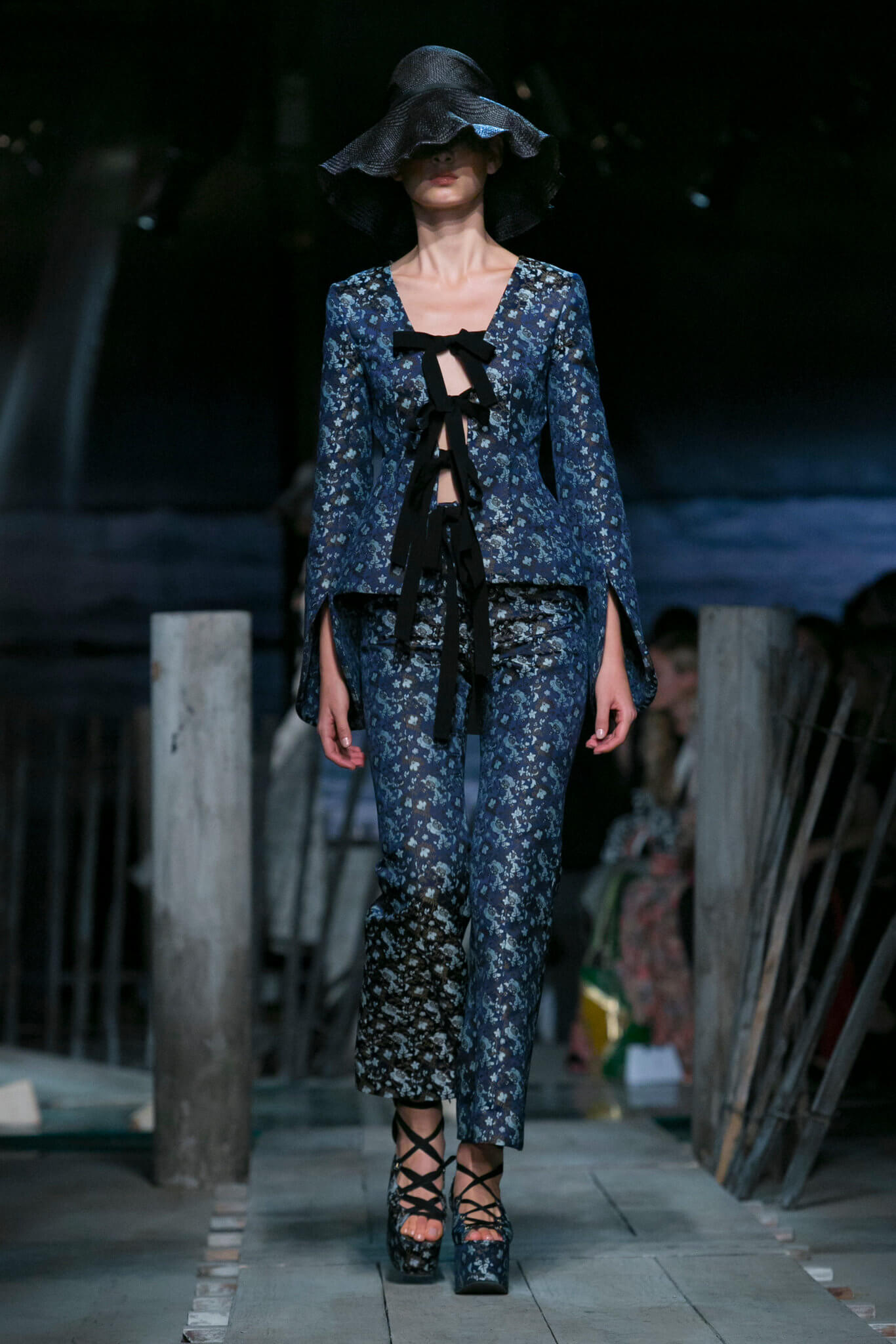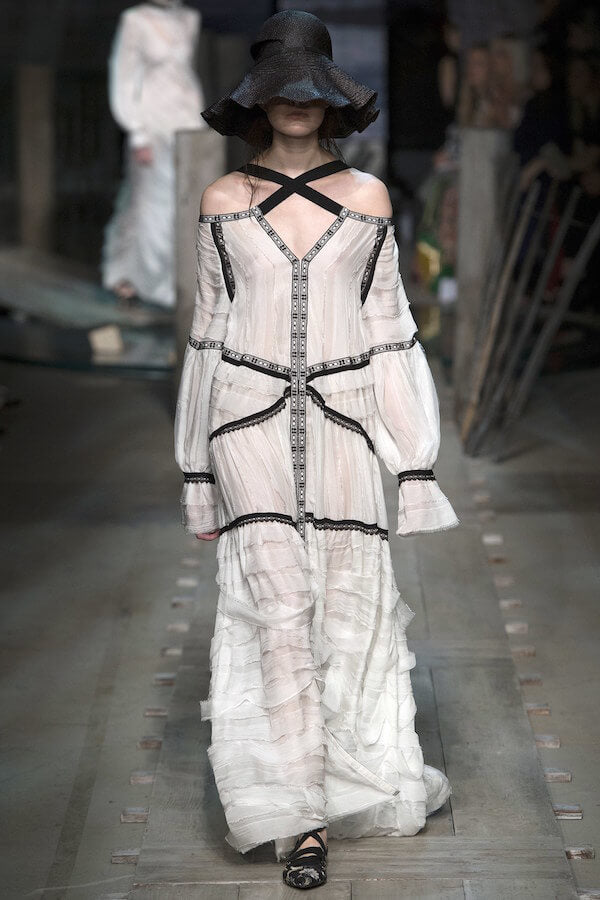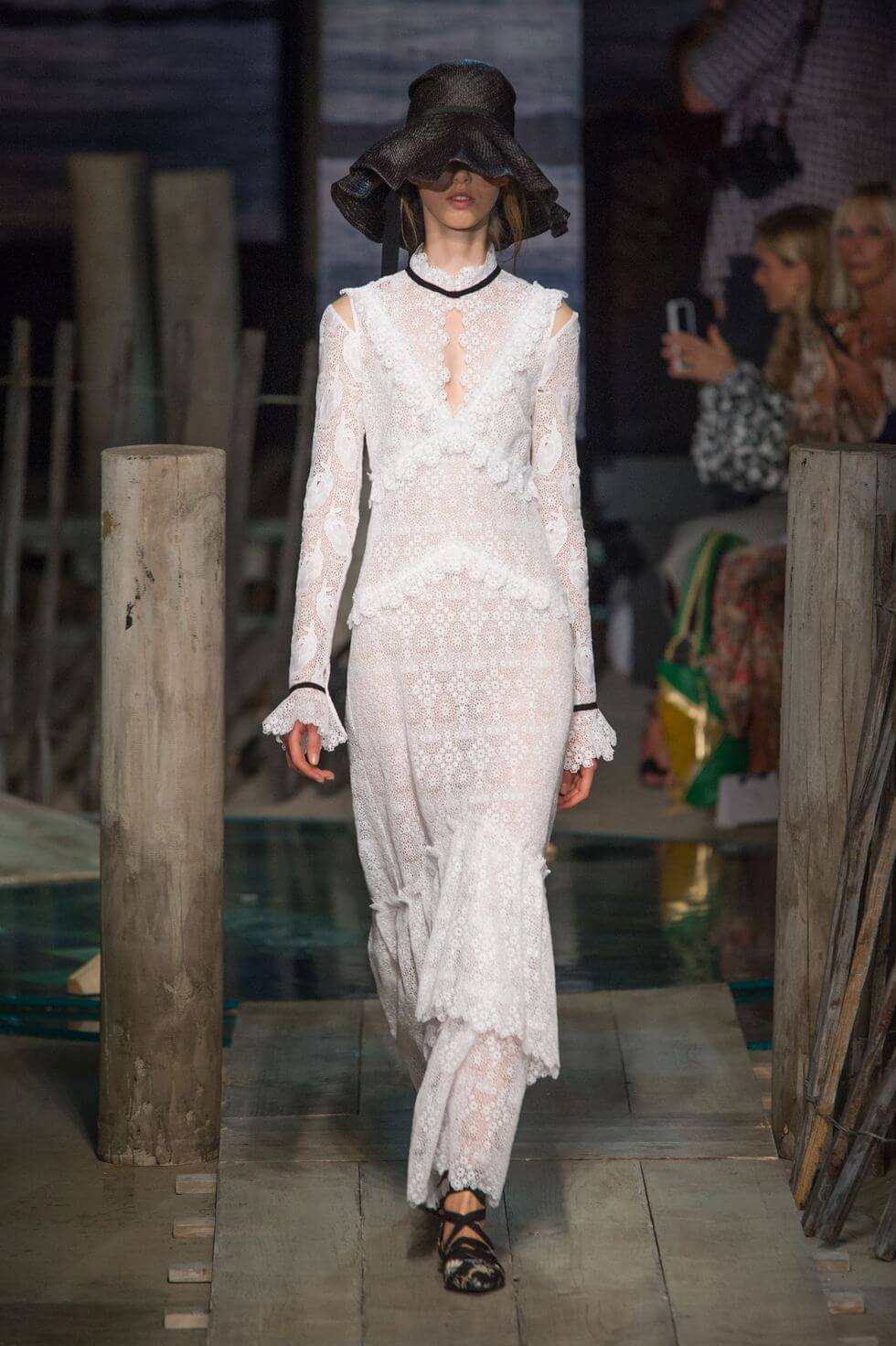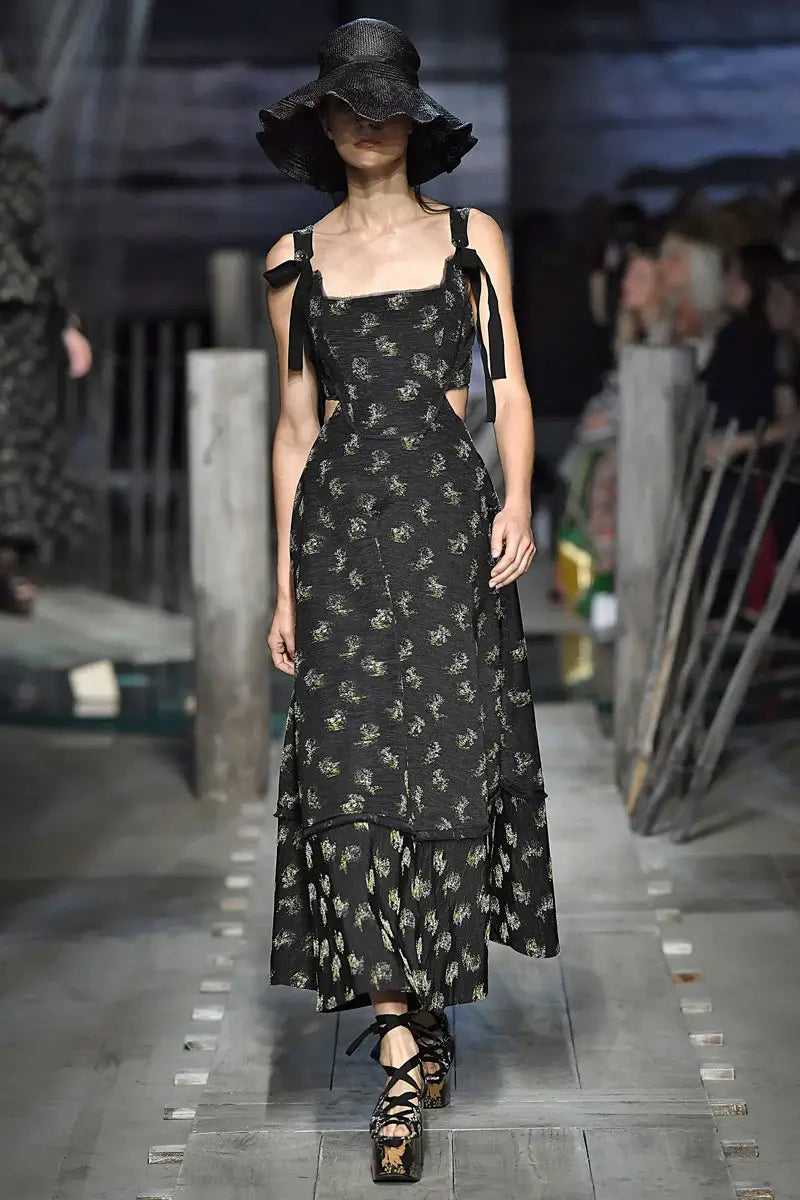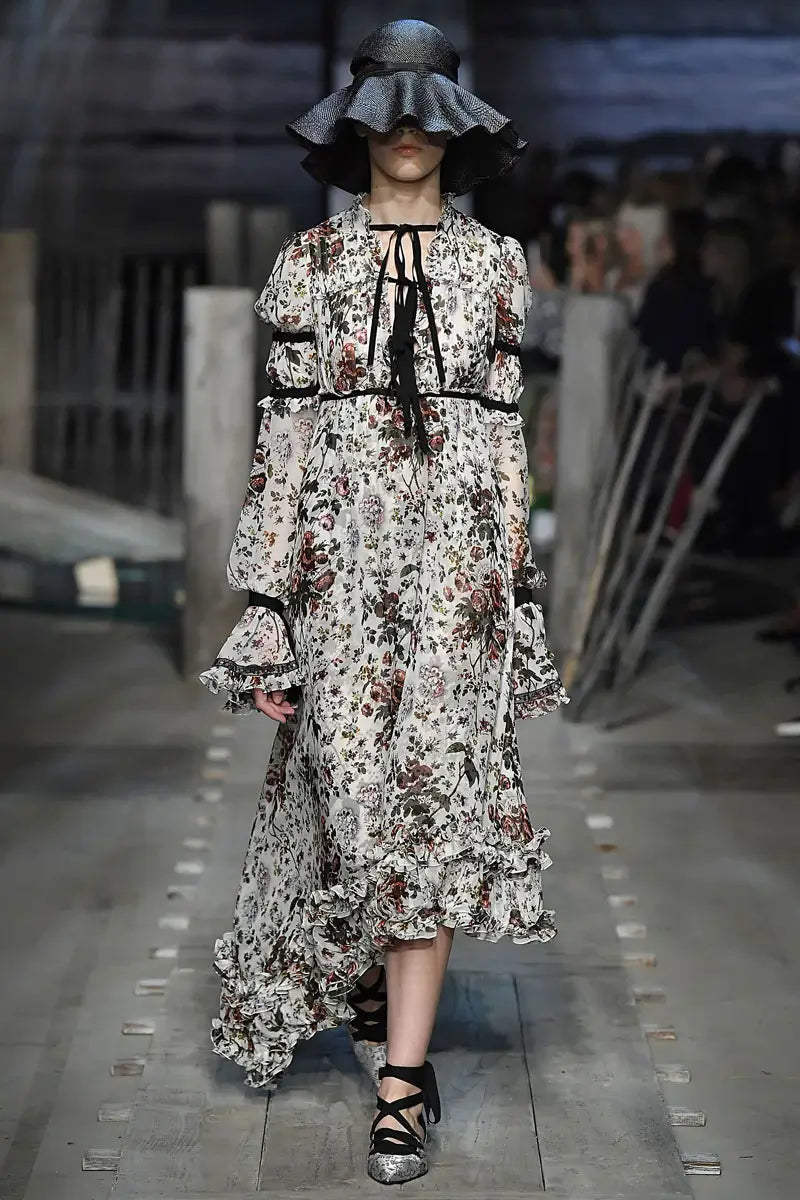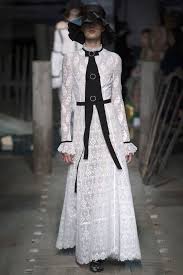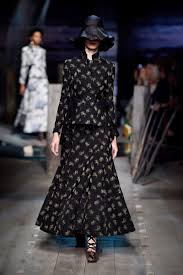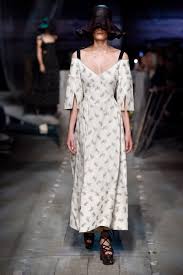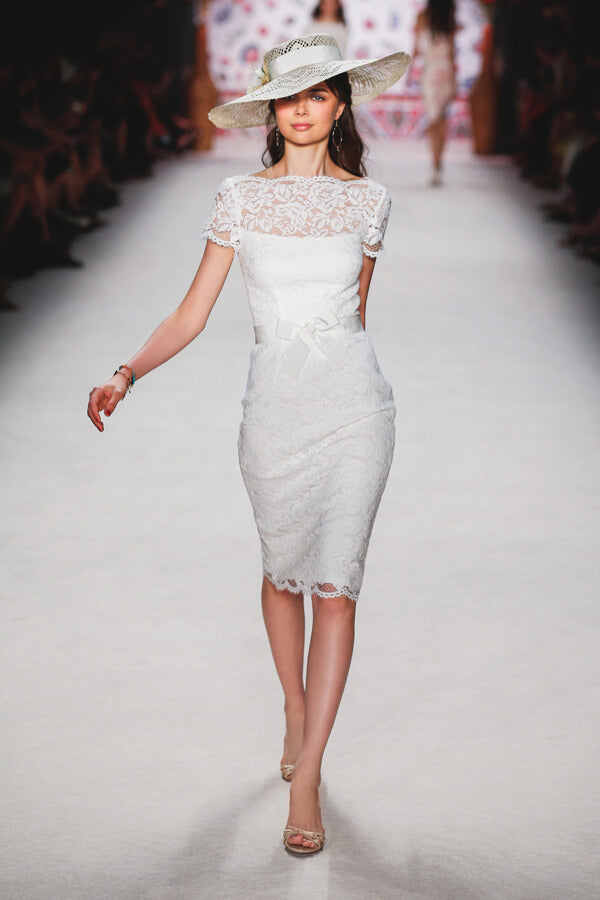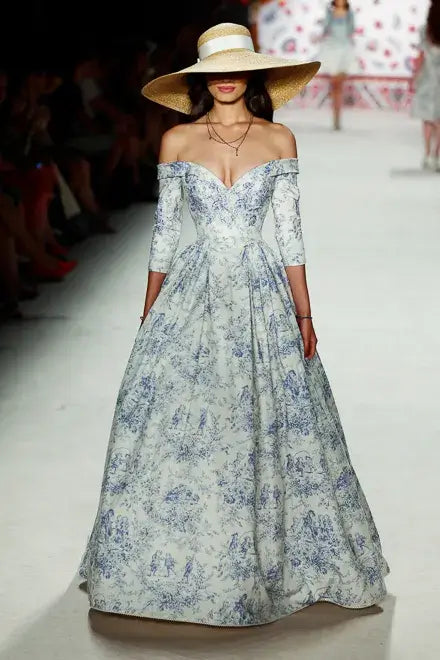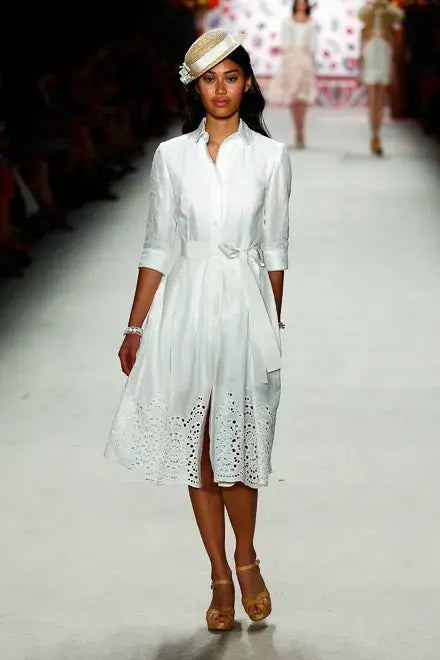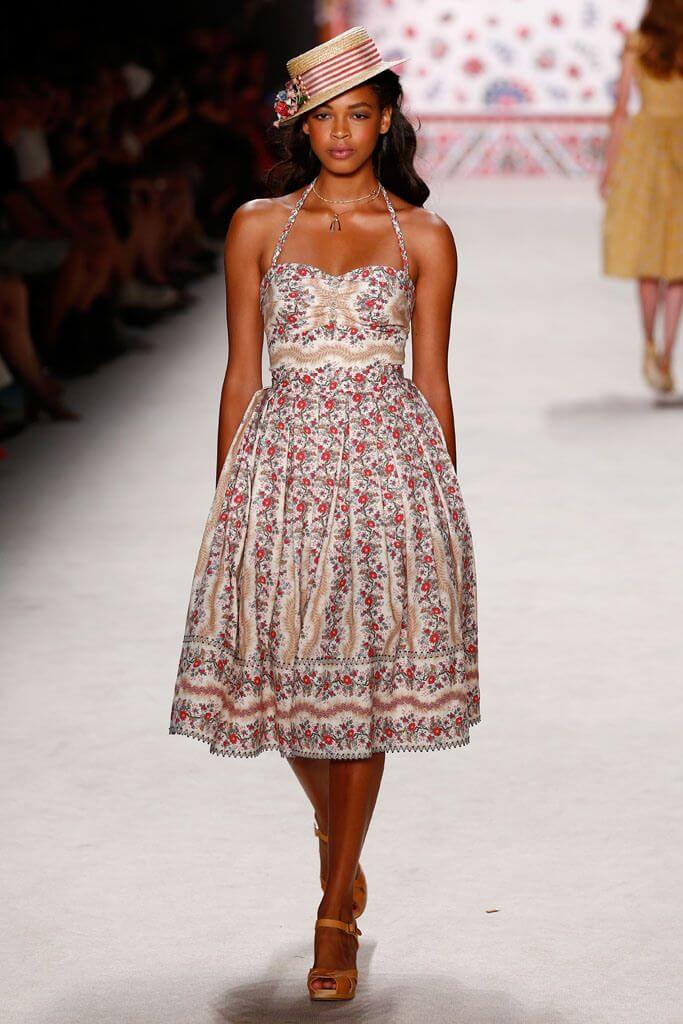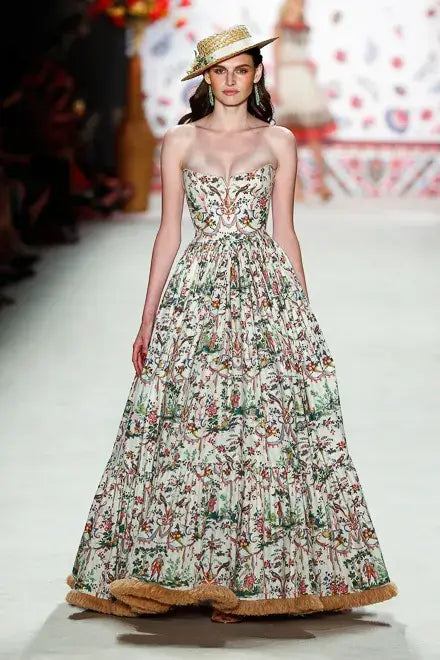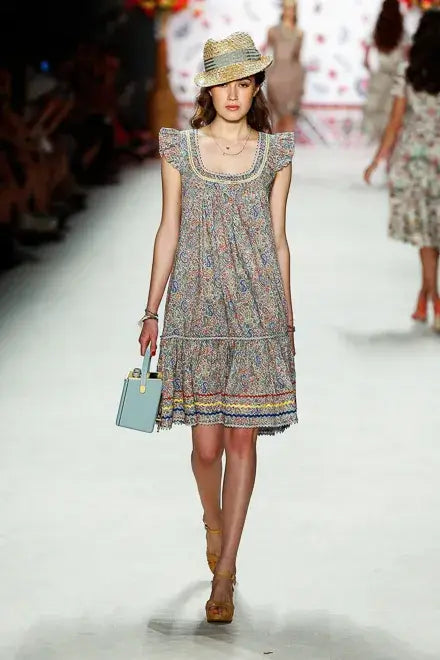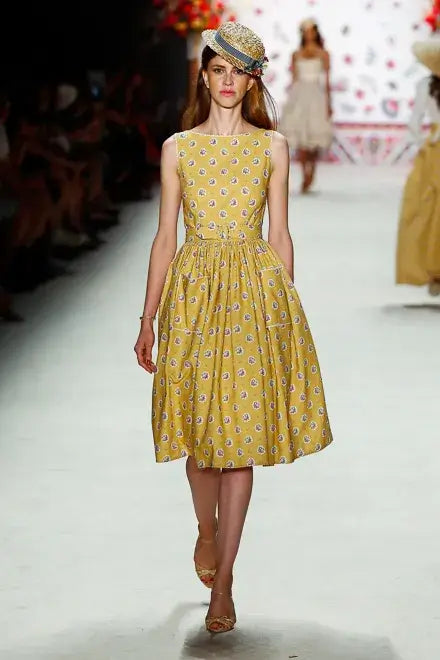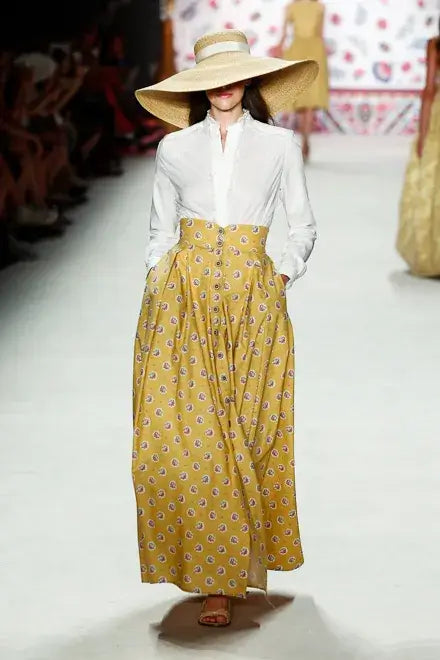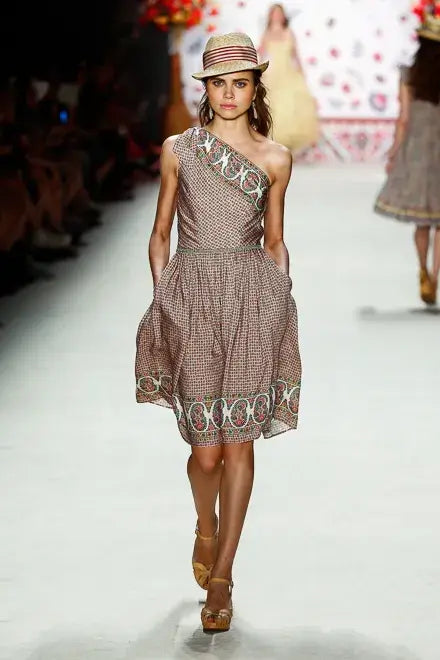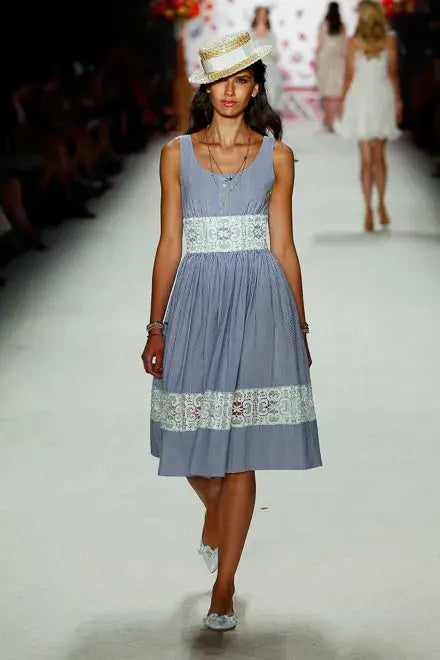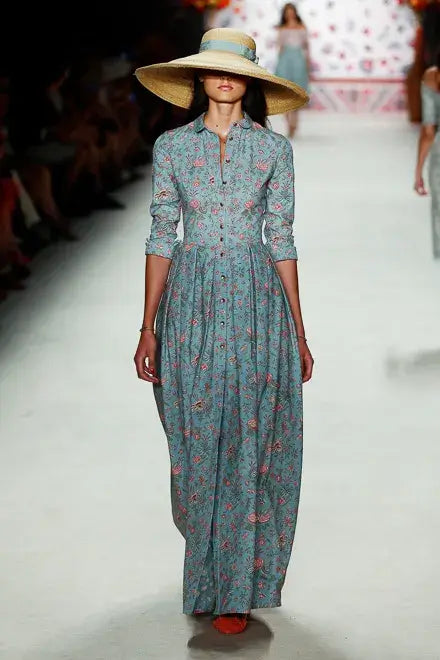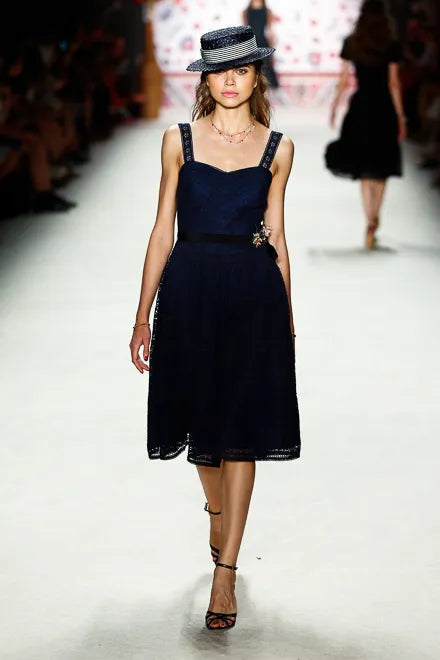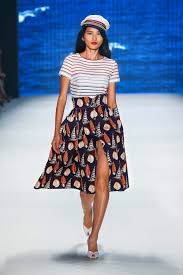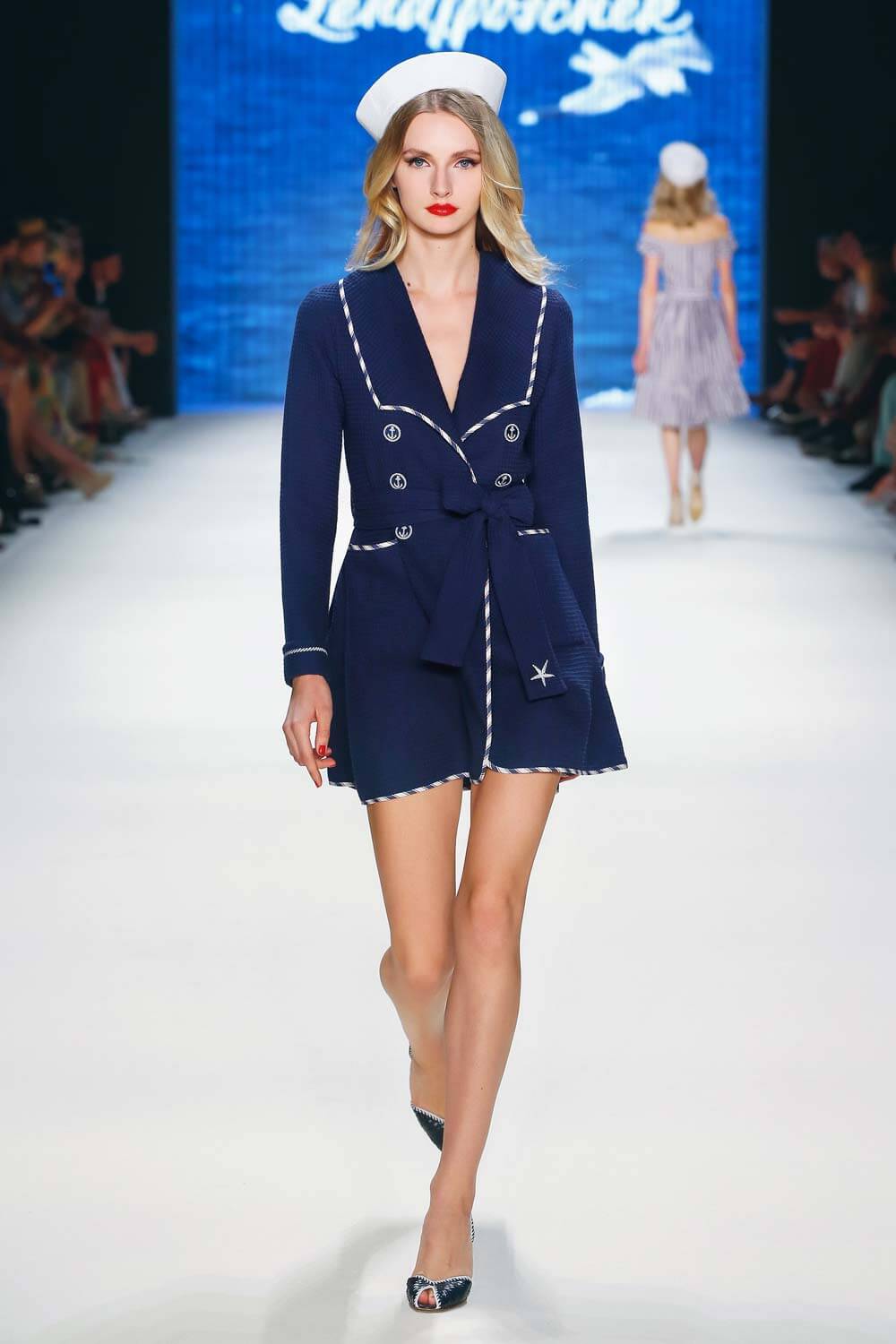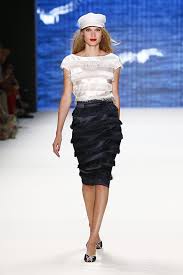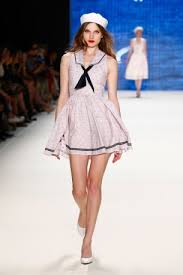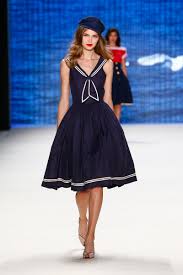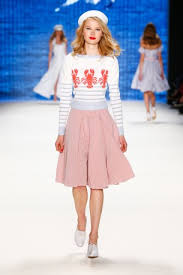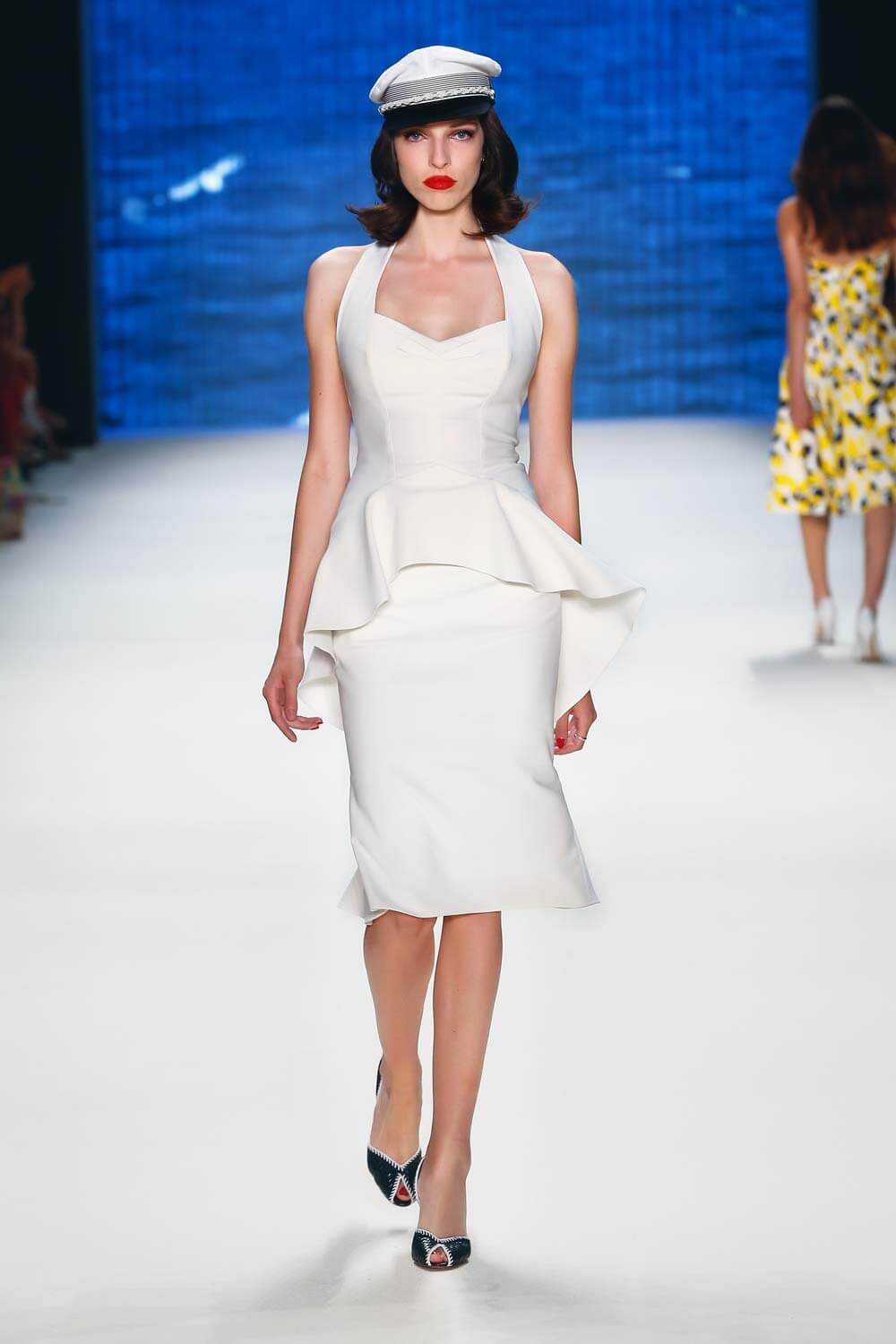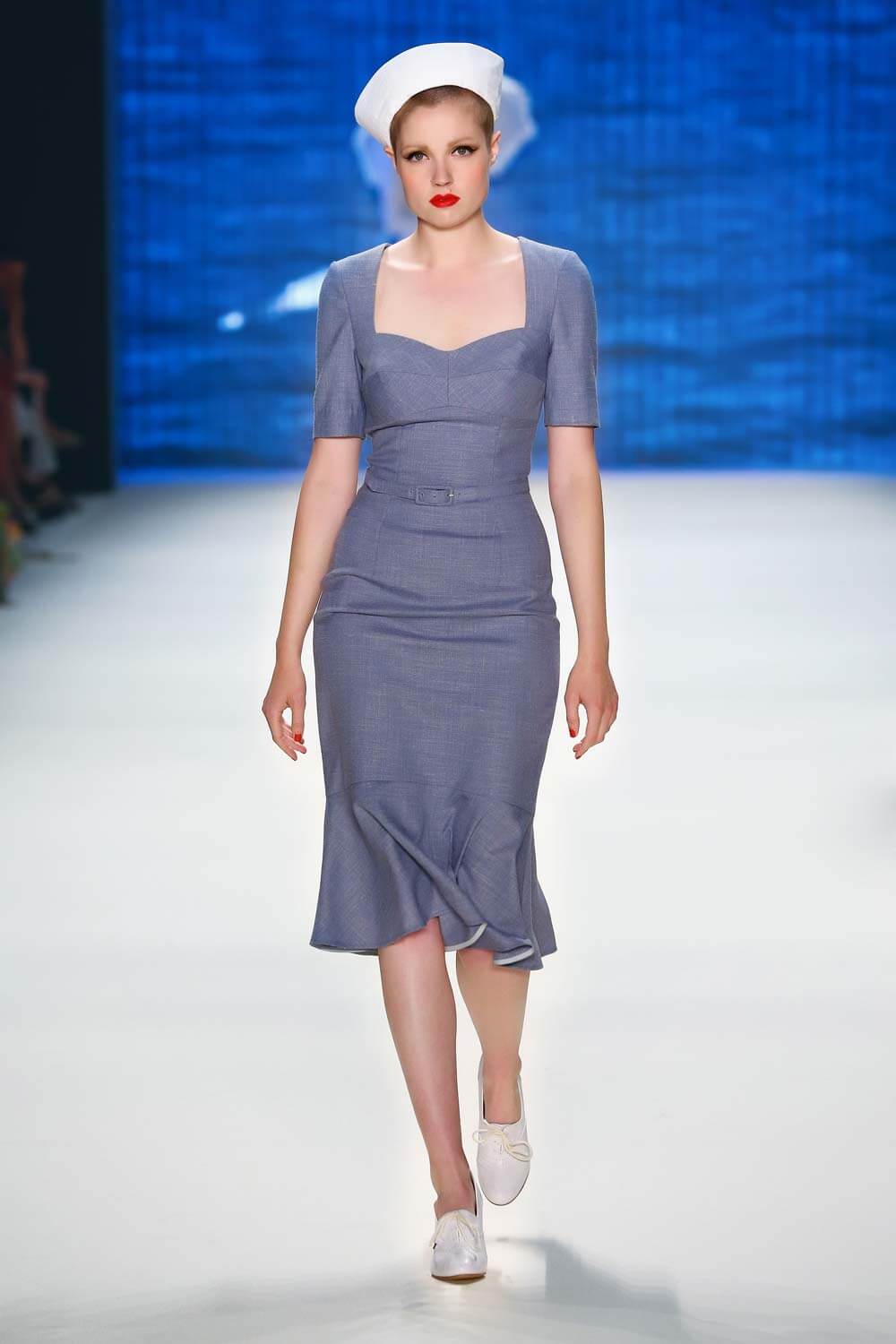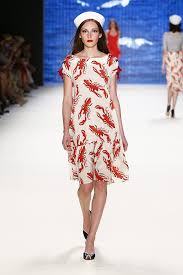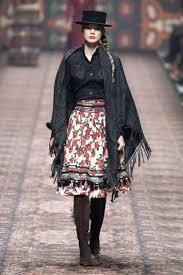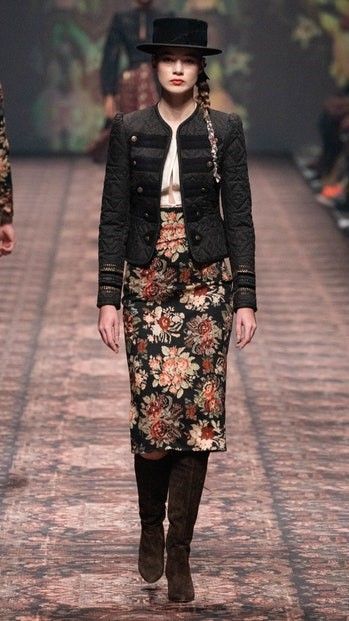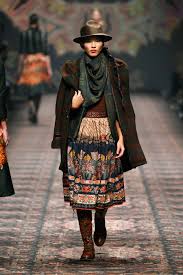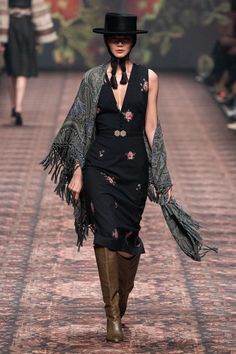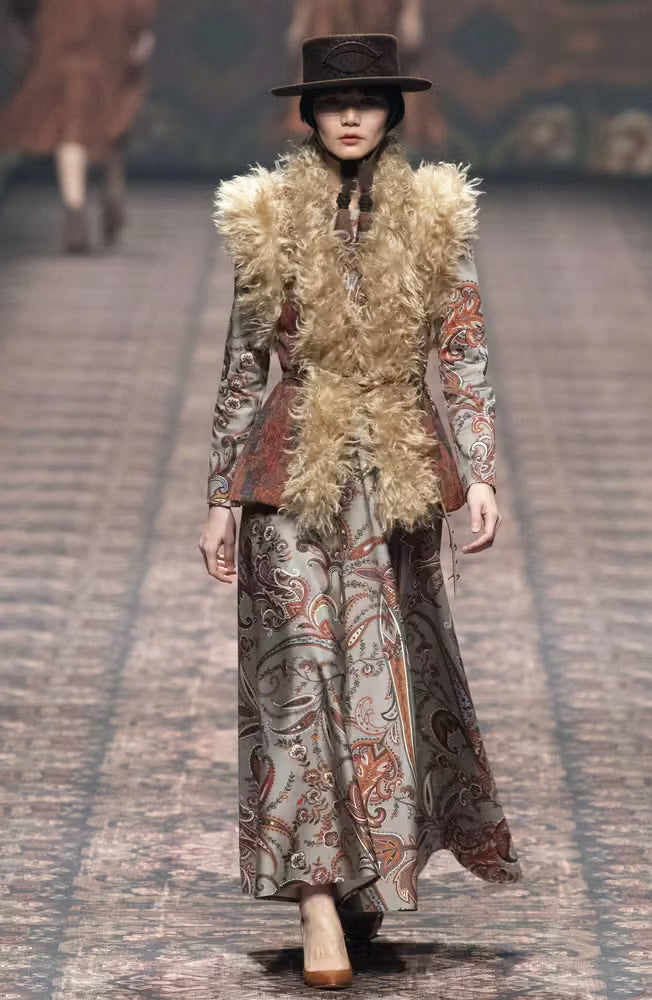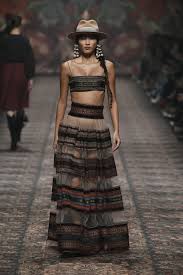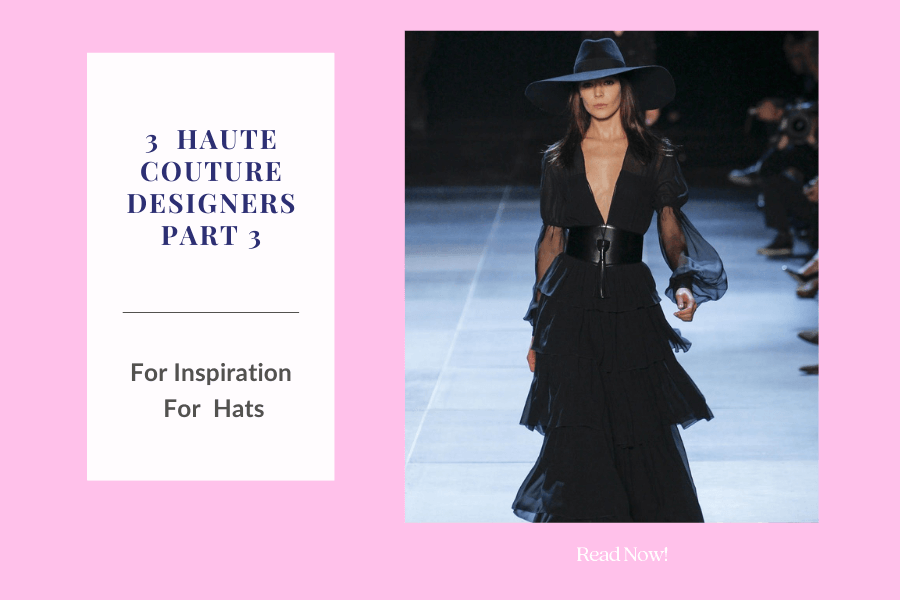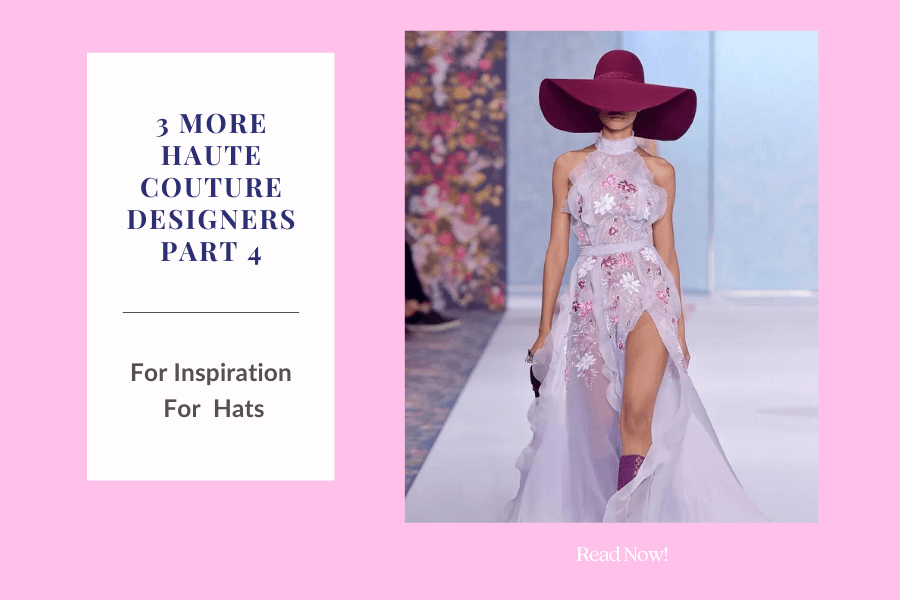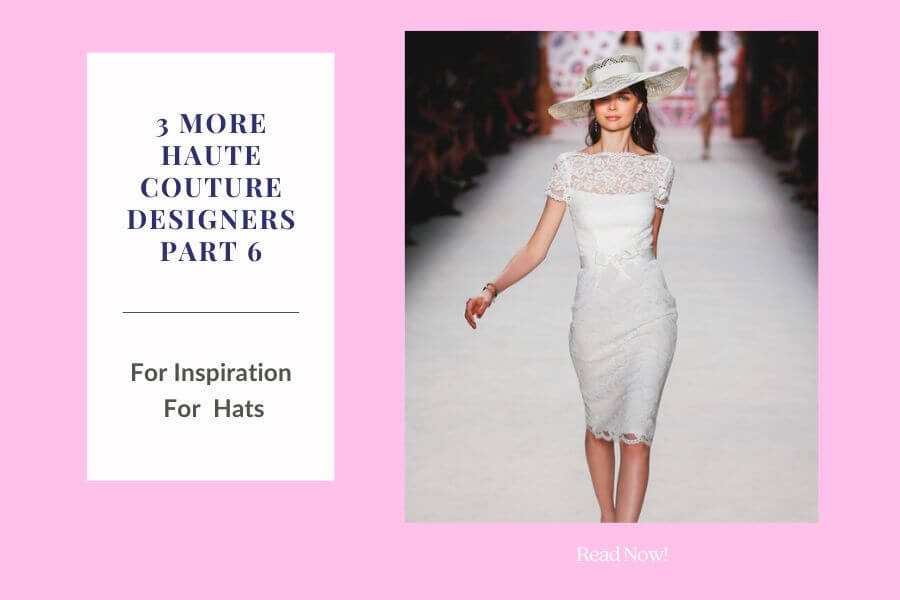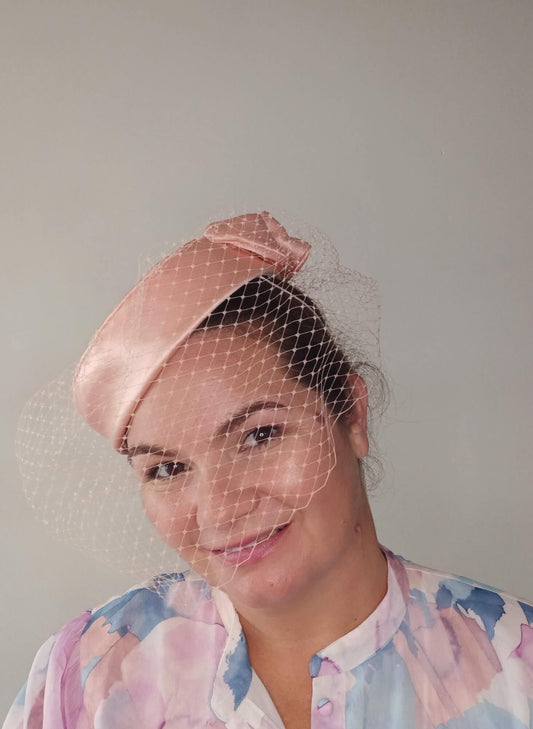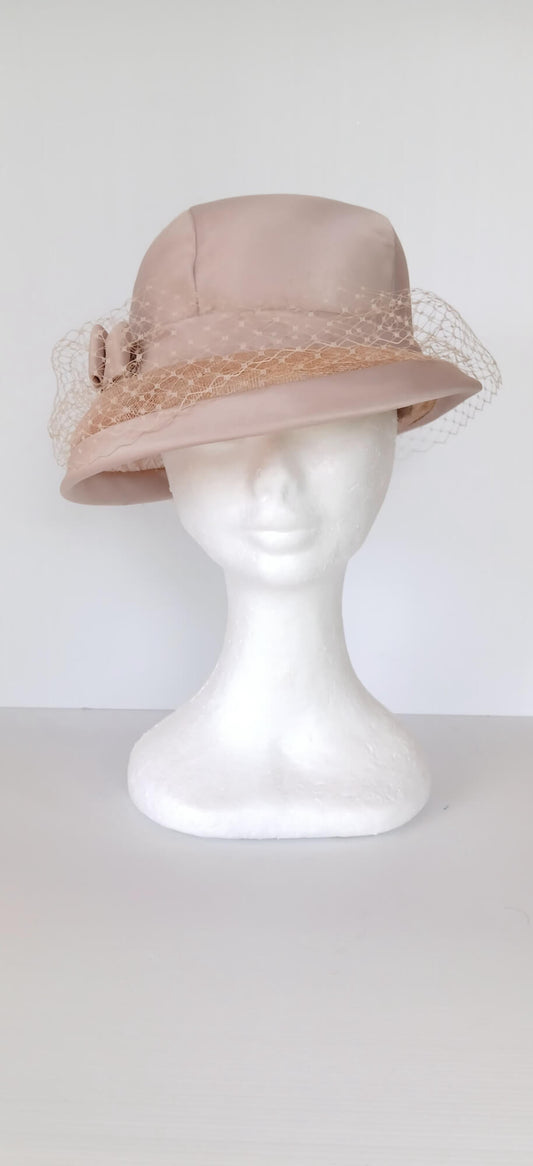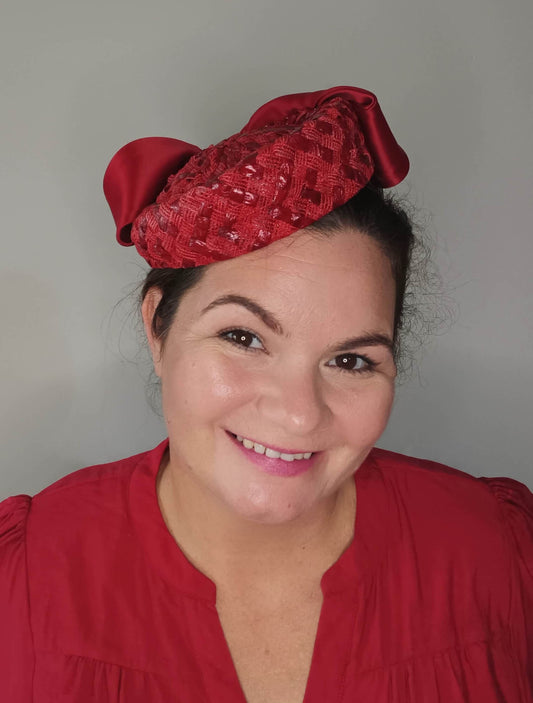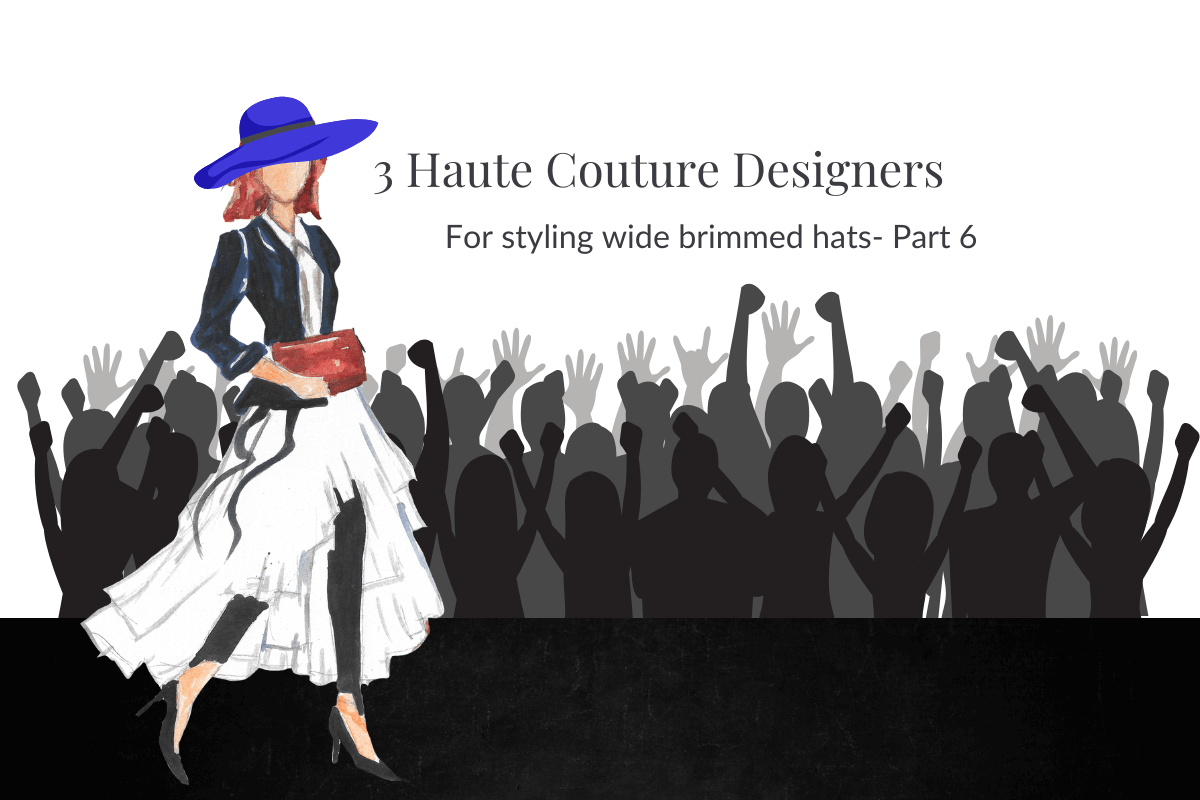
Threads of Elegance: Tradition, Modernity, and Storytelling in Fashion
As we move into Part 6 of our journey through the world of fashion, we explore the creative brilliance of three distinctive and influential names in the industry: Lanvin, Erdem, and Lena Hoschek. These designers have carved out their own unique spaces within the fashion world, bringing together rich histories, innovative designs, and a deep respect for artistry. From Lanvin’s heritage of Parisian elegance to Erdem’s lush, romantic aesthetics and Lena Hoschek’s vintage-inspired creations, each has left an indelible mark on the global fashion scene. In this section, we’ll delve into their inspirations, signature styles, and how they continue to shape the future of fashion. Get ready to discover the passion and creativity that define these exceptional designers and their visionary contributions to the world of style.
Lanvin: The Legacy of Jeanne Lanvin and the House's Enduring Influence
Lanvin (French: [lɑ̃vɛ̃]) is one of the most prestigious and historic luxury fashion houses in France, founded in 1889 by Jeanne Lanvin in Paris. It is the oldest French fashion house still in operation and remains a symbol of elegance and timeless design. Over the years, Lanvin has undergone many transformations but has continually upheld its reputation for high-quality craftsmanship, innovative designs, and a strong connection to its founder’s vision. Since 2018, Lanvin has been a subsidiary of the Shanghai-based Lanvin Group, but it continues to carry the rich legacy of its founder.
Jeanne Lanvin, born on January 1, 1867, in Paris, began her career as a milliner at the age of 16, training with some of the leading names in French fashion at the time. In 1889, she opened her first millinery shop at 16 Rue Boissy-d'Anglas, and just four years later, in 1893, she expanded her business to 22 Rue du Faubourg Saint-Honoré. Over time, Jeanne's talent and reputation grew, and she soon attracted the attention of some of Europe’s wealthiest families.
In 1897, Jeanne became a mother to Marguerite, who would become her muse and inspire many of the collections that followed. Jeanne began designing clothes for her daughter, and by 1908, this led to the creation of a children's clothing line. As demand grew, Jeanne expanded to women's clothing in 1909 and officially became a member of the Chambre Syndicale de la Couture, solidifying her place as a leading couturier.
Throughout the 1920s, Jeanne Lanvin continued to innovate, expanding her empire with new divisions. In 1923, she opened a dye factory in Nanterre to produce exclusive colors for the house, further demonstrating her commitment to unique design. Lanvin Parfums was also established in 1924, and her fragrance Arpège, launched in 1927, became one of the brand’s most iconic scents. Named after an arpeggio, inspired by the sound of Marguerite playing the piano, Arpège became a symbol of Lanvin’s emotional and artistic connection to her daughter.
In addition to perfumes, Lanvin also ventured into menswear, lingerie, and furs in 1926, and established an interior design store in 1920 in collaboration with Armand-Albert Rateau. Rateau's work also extended to designing Lanvin’s iconic perfume bottle for Arpège, which remains a key part of the brand’s aesthetic to this day.
Jeanne Lanvin passed away in 1946, and her daughter, Marguerite, took over the house. However, after Marguerite’s death in 1958, the ownership passed to a cousin, Yves Lanvin. The company went through various ownership changes over the years, eventually becoming part of L'Oréal in the 1990s.
Throughout the 20th century, Lanvin experienced many shifts in leadership, with designers like Claude Montana and Orazio Versolato leading the brand in various periods. In 2001, the fashion house was purchased by the Taiwanese media magnate Wang Shaw-lan and his investor group Harmonie S.A., and in 2007, Lanvin's perfume division was sold to Interparfums.
The house began to see a resurgence in the 2010s under the leadership of Alber Elbaz, who became the artistic director in 2001 and remained a central figure until his departure in 2015. His departure was followed by a series of short-lived creative directors, including Bouchra Jarrar and Olivier Lapidus.
In 2018, Lanvin became a subsidiary of Shanghai-based Fosun International, which acquired the majority stake in the fashion house. Under the ownership of Fosun, the brand was revitalized and restructured, with a new focus on collaborations and expanding its global reach. Lanvin's new era includes initiatives like Lanvin Lab, which launched in 2023 to explore unique collaborations, starting with a collection with rapper Future.
The house's legacy is continually evolving, and in 2024, Lanvin was preparing to reveal a new creative director to lead the brand forward. With a history steeped in couture and innovation, Lanvin remains a symbol of luxury and creativity in the world of fashion.
Lanvin AW 2014/15
Lanvin AW 2014/15
Lanvin AW 2011
Lanvin AW 2011
Erdem Moralıoğlu: A Journey of Elegance and Creativity
Erdem Moralıoğlu, born in Montreal, Canada, in November 1977, is the celebrated creative director and founder of the eponymous London-based fashion label, ERDEM. Known for his intricate, feminine designs, Moralıoğlu has carved a name for himself in the fashion industry as one of the most respected designers of his generation.
Moralıoğlu's upbringing was shaped by his diverse background—he was born to a Turkish father and an English mother, and spent his childhood between Montreal and Birmingham, England. His interest in fashion began early, leading him to Marianopolis College in Canada and later to Ryerson Polytechnical Institute in Toronto, where he earned a Bachelor of Arts in fashion. His dedication to the craft propelled him to an internship with Vivienne Westwood, where he gained invaluable experience in the fashion world.
In 2000, Moralıoğlu moved to London on a Chevening Scholarship to study at the Royal College of Art, where he honed his design skills and developed a distinctive aesthetic. After completing his studies, he worked in New York before returning to London, where he launched his own label, ERDEM, in 2005.
Since its inception, ERDEM has been celebrated for its romantic and sophisticated approach to fashion, characterized by floral prints, luxurious fabrics, and a modern take on femininity. Moralıoğlu’s designs quickly attracted attention for their timeless elegance, earning him a dedicated following among celebrities and fashion insiders. Over the years, ERDEM has expanded from womenswear to include menswear, with the first collection for men launched in 2021.
In 2017, ERDEM collaborated with H&M, marking his first foray into menswear and reaching a broader audience. The collection, accompanied by a visually striking campaign directed by Baz Luhrmann, brought the designer’s delicate yet modern designs to a global stage.
Moralıoğlu’s creative talents also extend to costume design. In 2018, he was tasked with designing costumes for 24 ballet dancers performing in Christopher Wheeldon’s Corybantic Games at the Royal Opera House in London, further establishing his versatility as a designer.
Erdem Moralıoğlu's work has garnered numerous accolades over the years, reflecting his impact on the fashion industry. In 2012, he was awarded the 'New Establishment' award at the Fashion Awards, and the following year, he won the 'Red Carpet Designer of the Year' award at the British Fashion Awards. His dedication to his craft was further acknowledged in 2014 when he was named Women's Wear Designer of the Year by the British Fashion Council.
In 2017, Moralıoğlu’s achievements were recognized in his home country as well, with him being named International Canadian Designer of the Year at the Canadian Arts & Fashion Awards. His contributions to fashion were honored in 2020 when he was appointed a Member of the Order of the British Empire (MBE) for his services to the industry.
Moralıoğlu resides in Bethnal Green, East London, where he runs his design studio. He shares his life with his husband, architect Philip Joseph, whom he married in 2018. Moralıoğlu also has a twin sister, Sara, who is a documentary filmmaker focusing on geography and natural history.
As of today, ERDEM stands as a hallmark of British design, offering collections that reflect Moralıoğlu’s unique vision of modern femininity and intricate craftsmanship. With an eye for detail and a commitment to elegance, Erdem Moralıoğlu continues to shape the world of fashion with each collection he creates.
Erdem SS 2019
Erdem SS 2019
Erdem 2017
Erdem 2017
Lena Hoschek: A Passion for Timeless Elegance and Craftsmanship
Lena Hoschek, born on April 23, 1981, in Graz, Austria, is a celebrated fashion designer and entrepreneur known for her distinctive collections that blend traditional craftsmanship with modern sensibilities. Describing herself as a dressmaker, Hoschek has carved a niche in the fashion world with her feminine, vintage-inspired designs, which draw on the elegance of the 1950s and folkloric influences.
Hoschek’s love for design began early in her life. She attended the prestigious Catholic private school Sacré Coeur Graz, before pursuing her passion for fashion at the Vienna Fashion School in Schloss Hetzendorf. There, she honed her skills in fashion design, setting the stage for her future career. After graduating, Hoschek moved to London, where she completed an eight-month internship with the iconic British designer Vivienne Westwood in 2003-2004. This experience not only broadened her design perspective but also allowed her to immerse herself in the world of high fashion, learning from one of the industry’s greats.
In 2005, Lena Hoschek took a bold step and founded her eponymous label in Graz, Austria. With a focus on creating high-quality garments that combine traditional European craftsmanship with her own unique vision, Hoschek quickly gained recognition in the fashion industry. The following years saw her expanding her brand, with stores opening in Vienna (2008) and Berlin (2010), though the Berlin location was later closed in 2016. Alongside her retail stores, Hoschek's online shop and partnerships with select retail outlets helped bring her designs to a wider audience.
Employing around 60 people, Hoschek produces two women’s collections each year, all of which are made in Europe. Known for her love of the past, her designs often feature a nostalgic 1950s flair, with full skirts, structured silhouettes, and intricate patterns. Her collections incorporate folkloristic influences, blending traditional elements with modern cuts, making her pieces timeless and versatile. In addition to her prêt-à-porter collections, Hoschek is also renowned for her bespoke couture and bridal designs, which showcase her meticulous attention to detail and passion for craftsmanship.
Since 2010, Lena Hoschek has been a prominent fixture at Berlin Fashion Week, where she presents her seasonal collections. Her distinctive style, which combines romanticism with a bold, independent spirit, has earned her a dedicated following of fashion lovers and industry insiders alike.
Despite the challenges of the fashion world, Hoschek's commitment to her craft has remained unwavering. She has continually worked to preserve and elevate the art of dressmaking, offering a rare combination of high-end couture techniques with a focus on wearability and timeless elegance. Her designs are not merely clothes; they are pieces of art that tell a story of craftsmanship, tradition, and beauty.
Lena Hoschek’s journey from a young fashion student in Graz to an internationally recognized designer is a testament to her passion, creativity, and dedication to preserving the art of dressmaking. With her elegant designs that celebrate femininity and traditional craftsmanship, Hoschek continues to leave an indelible mark on the fashion world, proving that timeless beauty never goes out of style.
Lena Hoschek SS 2016
Lena Hoschek SS 2016
Lena Hoschek SS 2017
Lena Hoschek SS 2017
Lena Hoschek Mercedes-Benz Fashion Week Berlin AW20/21
Lena Hoschek Mercedes-Benz Fashion Week Berlin AW20/21
As we look at the remarkable legacies of Lanvin, Erdem, and Lena Hoschek, we see three distinct but equally influential designers who have shaped the fashion world in their own unique ways. Lanvin, founded by Jeanne Lanvin in 1889, remains a symbol of timeless luxury and innovation, from its couture creations to its iconic fragrances. Erdem Moralıoğlu, with his romantic, floral-inspired designs, has carved out a reputation for sophisticated femininity, earning accolades and expanding into menswear. Meanwhile, Lena Hoschek’s dedication to craftsmanship and her vintage-inspired, folkloric collections offer a sense of nostalgia while celebrating timeless elegance.
Though each designer has faced their own challenges, they continue to influence fashion through their passion for creativity, craftsmanship, and tradition. From the grand legacy of Lanvin to the modern yet timeless designs of Erdem and Lena Hoschek, the fashion world is richer for their contributions. Their ability to blend history, culture, and innovation into their work is what makes them not just designers, but true icons in the industry.
As we continue our exploration of fashion’s most influential designers, Part 7 will spotlight the enduring elegance of Giorgio Armani, the red-carpet glamour of Badgley Mischka, and the ethereal craftsmanship of Elie Saab—each of whom has left an indelible mark on the world of haute couture and luxury fashion.
All images and videos courtesy of Google and YouTube
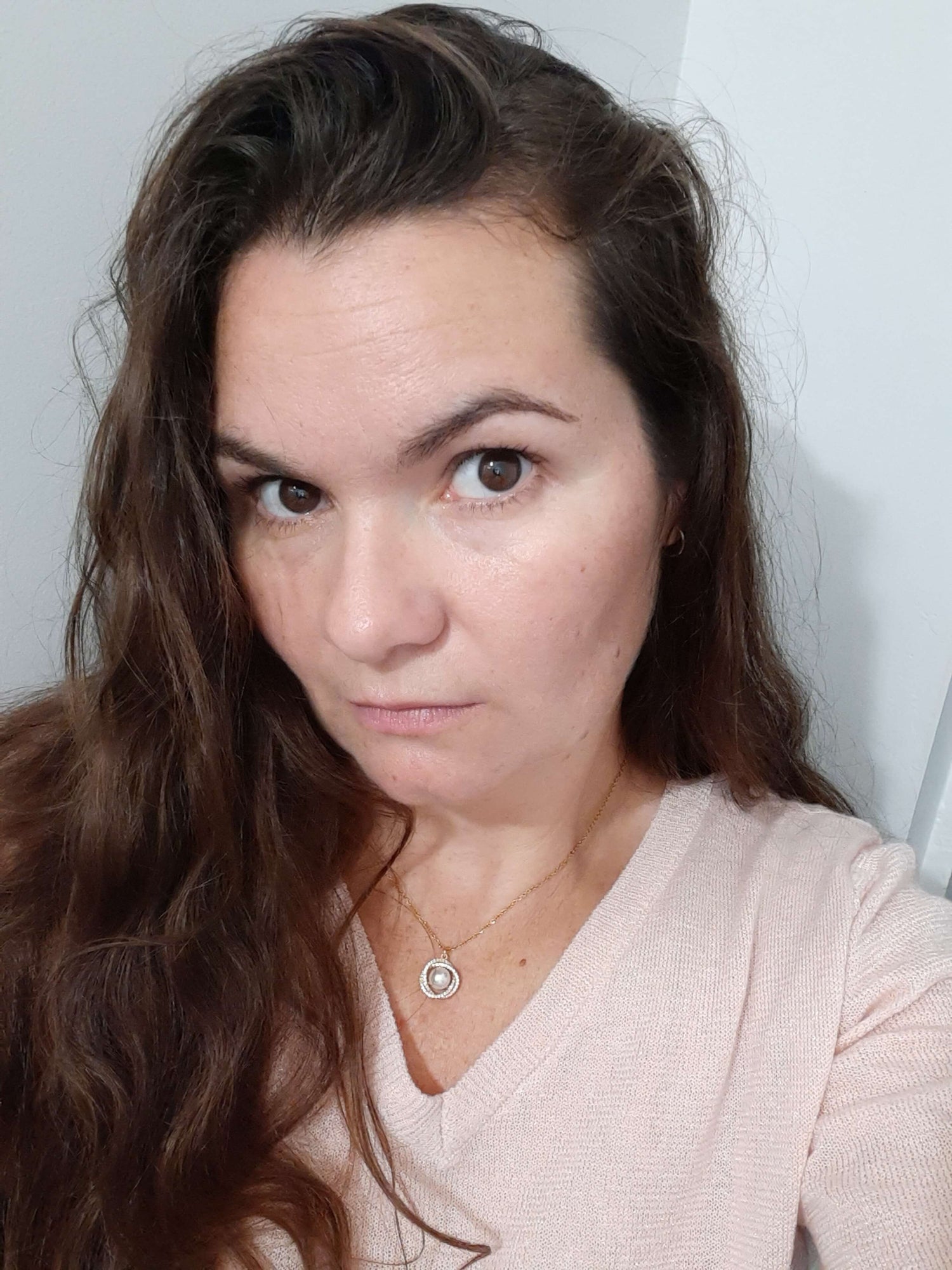
About the Author
Melissa Rath is an Australian milliner creating unique, handcrafted hats. She shares insights on design, styling, colour theory, the history of hats and all things millinery.
Featured collection
-
Apricot Satin Pillbox with Veiling and Bow by Melissa Rath Millinery
Regular price $250.00 AUDRegular priceUnit price / per -
Tan Picture Hat by Melissa Rath Millinery
Regular price $280.00 AUDRegular priceUnit price / per -
Red Swiss Straw Braid Pillbox by Melissa Rath Millinery
Regular price $280.00 AUDRegular priceUnit price / per

